SETTING THE BENCHMARK FOR OPTIMISING ASSETS AND SUSTAINABLE GROWTH



























 Writer: Phoebe Harper | Project Manager: Deane Anderton
Writer: Phoebe Harper | Project Manager: Deane Anderton
As a vast island nation, Australia has a rich and varied legacy of seafaring. The country boasts a proud and diverse maritime history, ranging from the ‘deep time’ stories of its First Nations people making the first sea crossings to Southeast Asia, to the advent of formal ports postEuropean settlement, and now hosting some of the largest and most advanced shipping operations in the world as the crux of the country’s trade.
Today, a staggering 98 percent of Australia’s trade is undertaken via marine transport, with ports across Australia handling over eight million containers every single year – a figure that has doubled in the past two decades and is only set to continue rising in the years to come.
Many of Australia’s cities and towns were originally built around ports. As such, they are an integral and intrinsic component to the fabric of the nation, handling everyday consumer goods alongside the raw materials that power our world, such as energy, metals and minerals. In addition, ports facilitate the tourism sector’s reliance on cruise vessels
and are a crucial component to the national defence sector.
The country’s primary trading partners via sea – both historically and currently – consist of China, Japan, South Korea, and India. Thanks to its strategic location in the South Pacific, Australia has long been a major player in international shipping with access to significant international maritime routes, including the Strait of Malacca, the waterway connecting the Indian Ocean with the South China Sea Pacific Ocean, and the Suez Canal as a vital link for import and export trade, amongst others.
In the early years of European settlement on Australia’s shores during the late 18th century, ports often comprised little more than wooden jetties – a far cry from the highly advanced mammoth operations that can be seen today. This time gave birth to the Port of Brisbane, which today resembles Australia’s largest capital city port. It began as a river operation handling the region’s first exports of timber shipments from local pine and cedar forests during the early period of settlement, transported by raft and loaded on to sailing
First port of call in the country’s supply chain, we take a deep dive into Australia’s port sector as a cornerstone of the economy, tool for sustainable growth, and gateway to the rest of the world

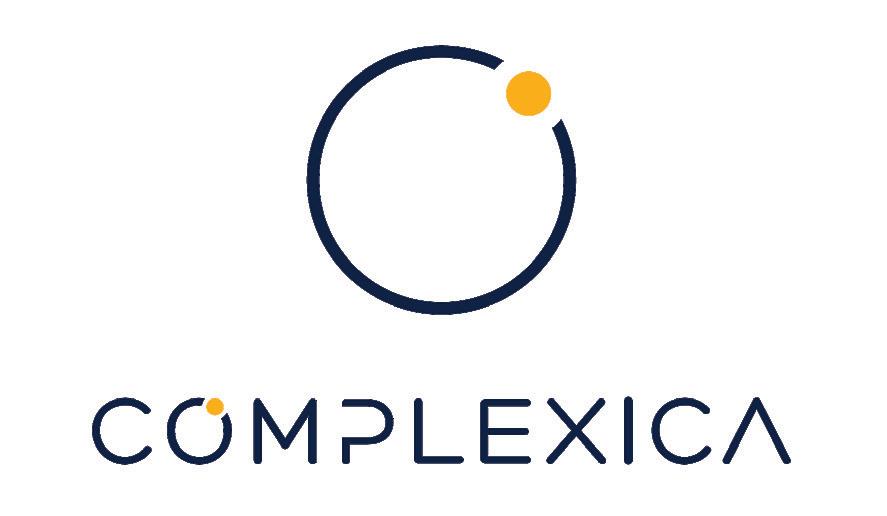
Optimising container movements to improve port productivity in Australia

Artificial intelligence (AI) is the tool of the future, that is becoming integral to the way industry operates across the world. Incorporation of AI into the supply chain sector is no different.
In Australia, ports are considered to be slower at turning ships around than the average international port, and the necessity to leverage AI to improve Australian container port performance is recognised now more than ever. According to a recent inquiry report carried out by the Australian Government Productivity Commission, inefficiencies in the country’s major container ports cost the Australian economy around AUD$600 million annually, a substantial amount of money that, through improving and automating systems, could be retained and used elsewhere.
Well-functioning container ports enable goods to enter the country more swiftly than otherwise and reduce the cost of such imports. Similarly, they enable Australian exporters to compete more effectively on global markets. Efficient ports minimise the time taken for containers to pass through and the time that ships and land transport spend within the port, while ensuring that inputs are used as effectively as possible. Ports that move containers more quickly, reliably and in a costeffective manner are better performers than those that do not.
The use of AI in container movement optimisation is a significant step towards improving Australian container port performance, and one embodied by Flinders Adelaide Container Terminal (FACT) based in South Australia. Through the optimisation of container movement within container yards, FACT is able to ultimately do more with less, limiting container handling amid other streamlined improvements. The project is a perfect example of how AI can help to solve complex problems that are beyond human capacity to solve.
When it comes to AI integration, FACT has a critical partner helping to achieve the port’s logistical productivity goals - Complexica. Employing more than 100 staff across four offices, Complexica is a leading provider of AI software applications that can optimise sales, marketing, supply chain decisions, and increase container movement optimisation capabilities in the area of ports, logistics and more.

Complexica was founded upon the research of several world-renowned computer scientists and has commercialised a modularised software platform called Decision Cloud® that empowers staff across multiple business functions to make better decisions. Decision Cloud® is powered by its award-winning AI engine - Larry, the Digital
Flinders Adelaide Container Terminal in South Australia Photo Credit: Flinders Port HoldingsAnalyst® - and the company’s investors include MA Financial Group (ASX:MAF), Flinders Port Holdings and Microequities Asset Management (ASX: MAM).
Complexica has successfully delivered countless software projects and deployments, using project management methodologies that allow for ontime and on-budget delivery. Complexica has considerable experience working with some of the world’s largest companies and organisations on projects that involve large data sets, challenging optimisation and prediction requirements, and complex system integrations and operational workflows. Some of its customers include well-known names like Arnott’s, Asahi, Bunzl, DuluxGroup, Lion, Metcash, Pernod Ricard, and PFD Foods, among others.
Most Commercial-Off-The-Shelf (COTS) software applications for managing supply and demand activities are unable to handle customer-specific requirements, such as variable and calendarised constraints, negative stock values, non-linear relationships, complex business rules set in time changing data environments, and non-standard business processes and workflows, among others. Complexica understands that the only business important to customers is their business, so the company has engineered its Decision Cloud® software platform to be flexible enough to ensure that the software fits the customer’s organisations by configuring each deployment to their unique business requirements, processes, and workflows.
Complexica makes use of world-class science when it comes to decision optimisation. Scientific expertise runs across all levels of the company, and it maintains research partnerships with leading research institutions such as the University of Adelaide, RMIT, and the Polish-Japanese Institute of Information Technology.
Complexica’s central mission is to help customers, such as FACT realise measurable improvements in areas such as operational costs, forecast accuracy, asset utilisation, working capital. To that end, Complexica works with each customer to provide ongoing validation of its software and the resulting benefits.
Through Complexica, a unique combination of science, software, and business process understanding coalesce to address complex business problems, because scientific approaches such as machine learning (ML) have the potential to create value through better decisions. However, to realise this business value, these science-driven recommendations must be embedded and actioned
Complexica’s mission is to help companies become more effective in their sales and marketing and more competitive in the markets they serve, through optimised decision-making.
Complexica’s vision is to become a world leader in the practical application of AI software. As the company grows and expands, its goal is to achieve a global presence and trade on the ASX stock exchange as a publicly-listed company that represents a major part of the Australian business landscape.
within operational workflows. This requires deploying enterprise software that is tuned to a specific industry, company, and business process. Most companies excel in one or two of these areas – science, software, or business process understanding – but Complexica focuses on the combination of all three.
Leading-edge, AI-based prediction capabilities place Complexica at the forefront of business optimisation and improving port performance. Many traditional data mining and modelling methods are often less than ideal for finding non-linear relationships and counter-intuitive trends, and for analysing vast quantities of real-time data. For these reasons and others, Larry, the Digital Analyst® employs both classical and non-traditional methods, including several new branches of AI and ML. By combining different techniques, Larry, the Digital Analyst® automatically adjusts and self-validates in any timechanging environment and is especially well suited for large and fast-moving data sets.
A similar approach is used for optimisation, where multiple techniques simultaneously compete and cooperate with one another, producing superior results with respect to standard optimisation methods. Larry, the Digital Analyst® is easily linked to any objective function, can be extended to include domain-specific and user-provided algorithms and modifiers, and was named the 2018 Australian Innovation of the Year and the 2019 Australian Software Innovation of the Year.
Larry, the Digital Analyst® also hosts a range
of preconfigured AI algorithms that are tuned for specific business challenges, such as pricing, segmentation, cross-selling and up-selling, promotional planning, and demand forecasting, among others. The algorithms are constantly learning, and their performance is continuously monitored to identify and correct any unintended consequences of algorithmic bias and the timechanging environment they operate in.
Complexica’s Decision Cloud® software platform is implemented through staged and scalable deployments, rather than “big bang” implementations to minimise risk for organisations and to accelerate return on investment. All of Complexica’s software projects are quoted at a fixed price and time-line deployments, with responsibility for any cost overruns.
The company’s delivery model is based on agile principles, and Complexica strives to be responsive to customers at all stages of a project. Its business model is based on the successful use and adoption of each software deployment, making customer success, Complexica’s success. Complexica has also developed a set of standard integration APIs for its Decision Cloud® software platform for common ERP systems and platforms, as well as public data sources such as the Australian Bureau of Statistics, Bureau of Meteorology, among others.
Complexica’s Decision Cloud® software platform is deployed through Amazon Web Services (AWS). Customers benefit from the data centre and network architecture built to meet the requirements of the most security-sensitive organisations. In addition, Complexica follows best-practice security standards aligned to the globally recognised standard ISO27001. Complexica has achieved ISO27001 certification, recognising its commitment to providing customers with the highest level of
information security management. Following an extensive audit process, the certification was issued by TQCSI International, an accredited, third-party certification body providing auditing and certification of international management system standards with offices in more than 30 countries.
Complexica has significant domain-specific knowledge and expertise within a number of industry verticals, including ports and logistics, food and liquor, building materials, pharmaceuticals, wholesale and distribution, financial services, consumer goods, and retailing. The company also understands operational business challenges, processes, and workflows within these industries. Complexica’s experienced and dedicated Business and Data Analysis team brings this domain knowledge and business process understanding to every customer engagement.
Complexica is a customer-centric organisation that is focused on providing commercial outcomes by leveraging AI software. For this reason, its Business and Data Analysis team spends time with each customer to understand the operational aspects of the business and any unique elements of the challenge or business problem being addressed. From this point, a current and future state is defined, and Complexica’s Decision Cloud® software platform is configured and tuned to the future state business processes and workflows.
Many organisations have a large number of manual processes which take significant time and labour to manage. Just like Complexica’s work with FACT, these processes can be automated through approval workflows, embedded recommendations, and autonomous decision making. While streamlining processes is always a significant effort, the benefits begin accruing immediately, improving port performance into the future.
www.complexica.com

ships bound for Sydney. Elsewhere, the Port of Adelaide – now the largest port operation in Southern Australia – is generally credited as one of the country’s earliest port settlements with its origins dating back to 1836. Indeed, this historic site was the first point of contact for thousands of emigrants arriving on Australian shores by ship.
However, since these port histories are intrinsically linked to the settlement era, they can override the legacy of the occupation on these lands that pre-dates the arrival of Europeans in Australia. During the complicated and fraught era of European settlement, the exploitation of these waterside gateways paid little respect to the Traditional Owners of the land, who had long gathered in such places as locations of deep spiritual meaning –places where ancestral Indigenous Australians might hunt, camp, and fish. This legacy is now widely respected across the sector today, and can be explored through various resources such as the ‘Ports on the Indigenous Map of Australia’, an online tool developed by the leading industry body, Ports Australia.
Discoveries of natural resources such as iron ore and gold in the 19th and 20th centuries originally paved the way for the growth of ports across the country as a means to handle these exports. Now a major transport hub for
DARWIN PORT – STATISTICS
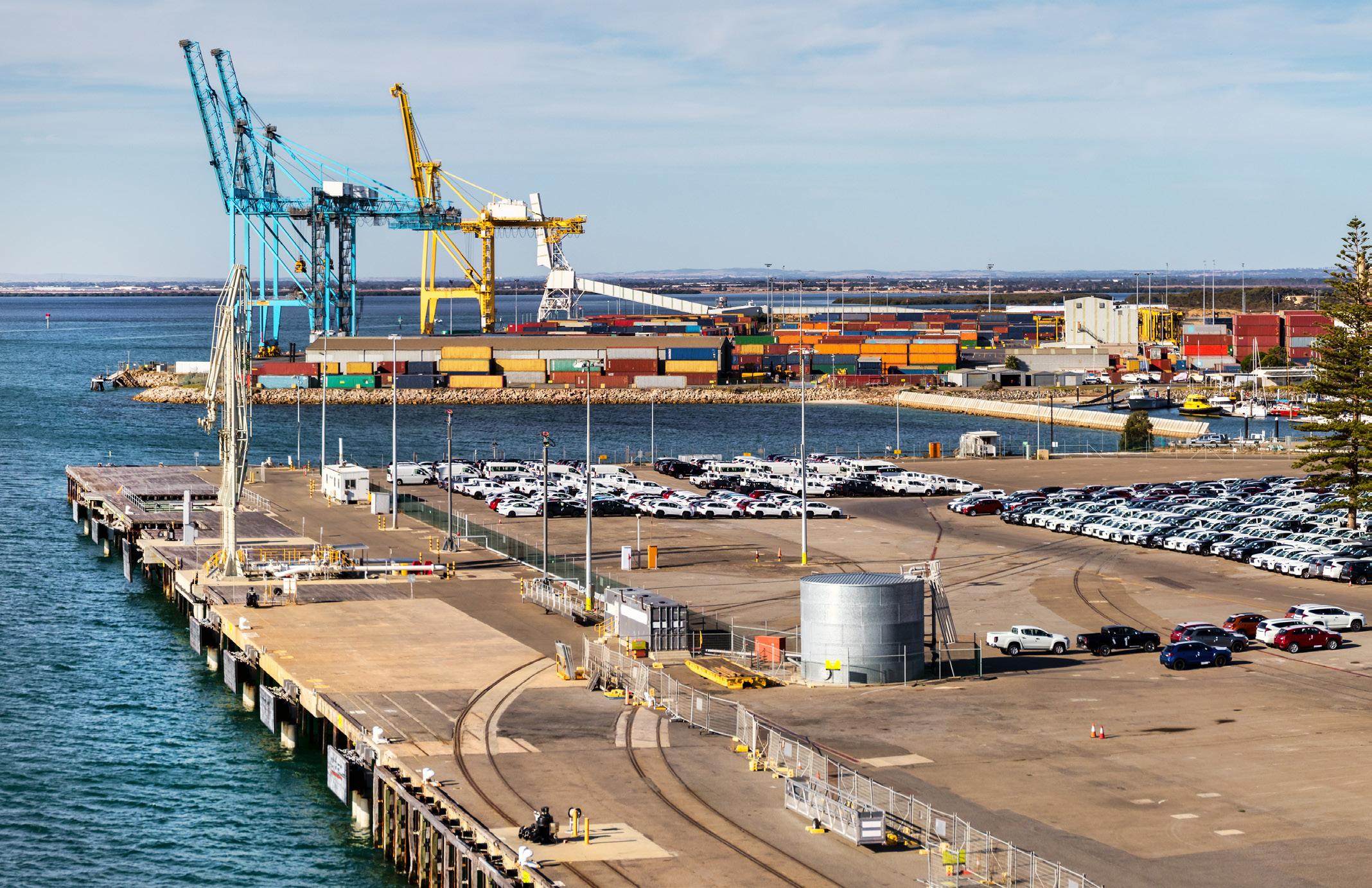
2021/22
• 248,830 - HEAD OF CATTLE EXPORTED
• 912,810 - KILOLITRES OF PETROLEUM PRODUCTS IMPORTED
• 508,883 - TONNES OF DRY BULK EXPORTED
• 6,772 - MOTOR VEHICLES IMPORTED
the resource-rich region of Western Australia (WA), the Port of Hedland originated as a jetty catering to the needs of the pastoral industry, before gold was unearthed in nearby Marble Bar. This discovery fed major extension works in 1908, culminating in the development of a railway connecting the port with the extensive gold mining operations a few years later.
Elsewhere, in the southeastern state of Victoria, the mighty Port of Melbourne traces its origins back to 1842, when the bank of the Yarra River first served as a wharf. It has since evolved to become the nation’s best connected port with comprehensive facilities designed to cater for a wide spectrum of vessels, as seen in 2016, when ER Long Beach became the largest container vessel to call at the Port of Melbourne with a capacity of nearly 7,500 twentyfoot equivalent units (TEUs).
The 19th century continued as a time of great development for the nation’s ports with significant progress in delivering an improved, robust infrastructure and the implementation of deepwater bulk facilities that would play a pivotal role during wartime.
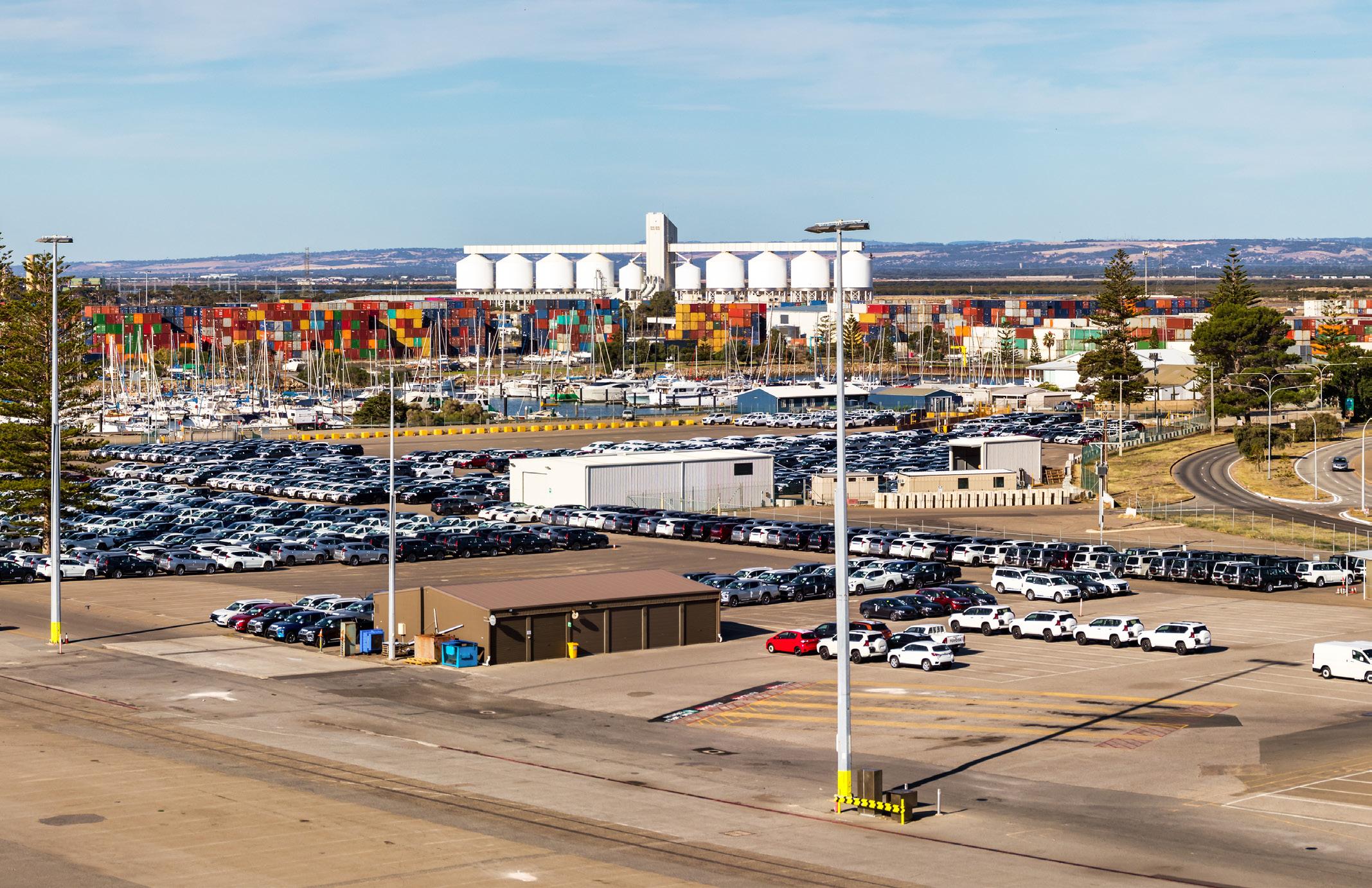
In terms of the significance of Australia’s ports on the worldwide shipping stage, the year 1969 signifies a seminal moment. The docking of the vast Overseas Container Ltd (OCL) vessel, Encounter Bay, in Fremantle Port on the coast of WA effectively heralded the arrival of the global container revolution, with the introduction of the port’s first container terminal launched later that same year. As a result, Australia entered the realm of international carrier trade, a movement that was transforming ports across the globe as a capital-intensive model of operation handling extensive amounts of cargo from ship to shore through advanced stevedoring operations that continues to shape the sector today.
To name just a handful of the major port operations currently serving this vast nation, Australia’s northern territory hosts the Port of Darwin, so named after the famous naturalist who once visited the operation. To the east, the Port of Sydney is the trade nexus of the eastern Australian coastline, while the same can be said for Port Hedland on the western coast in WA. The Port of Adelaide is the prime shipping centre of Southern Australia, with the
The role of South Australia’s ports has never been more important, as the world’s economy rebuilds and recovers. Having a reliable network of ports to enable two-way international trade for South Australian agriculture and aquaculture farmers, the mining industry and general commerce is essential. Without growth, sustainability and development at Flinders Port Holdings (FPH), that would not occur.
FPH has undergone significant changes as it recognises the need to incorporate smart technologies to streamline logistics and movements into and out of ports, as well as improving sustainability and embracing innovation.
Led by Chief Executive Stewart Lammin, who was recently re-appointed as Ports Australia Chair, there has been a recognition that the use of increasingly-sophisticated smart technologies will be essential moving forward – and particularly at the Flinders Adelaide Container Terminal (FACT).

FACT is working to meet growing demand by introducing artificial intelligence (AI) and data-led solutions to move containers through the terminal as efficiently as possible. For the past 18 months, FPH has been working with Complexica, a leading provider of AI software applications.
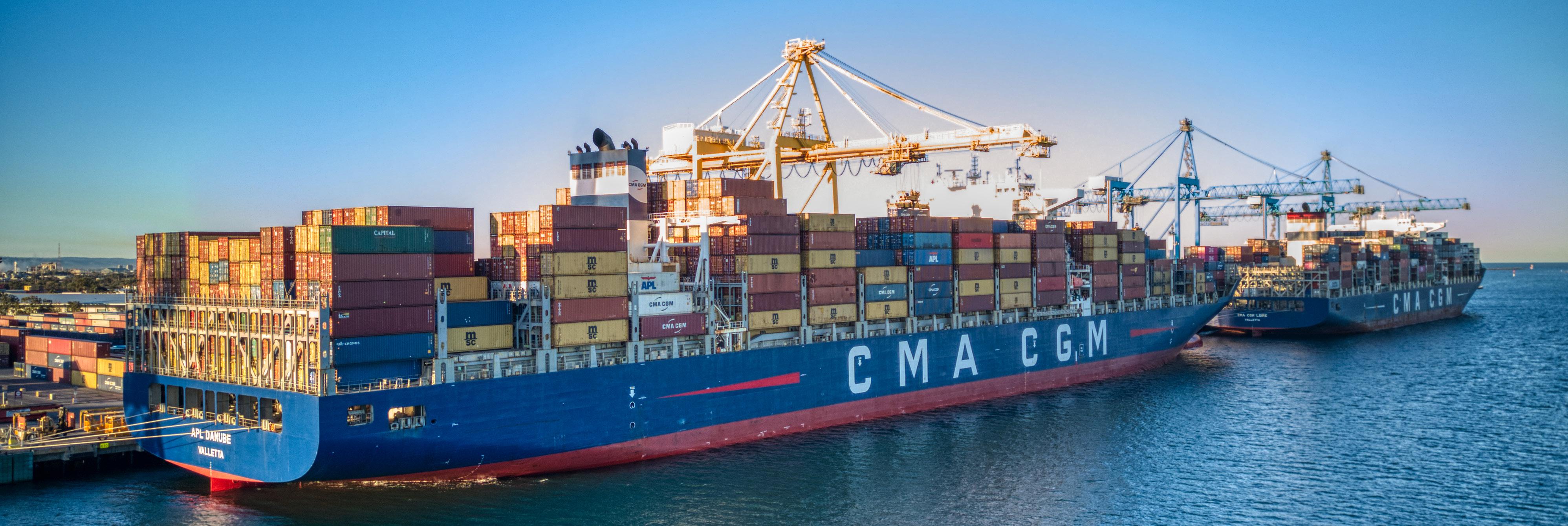
Complexica and FPH are collaborating to explore how AI can optimise the manual process of moving a container through FACT, putting FACT at the forefront of container terminal innovation. The AI application pre-empts and manages key decisions linked to a container’s movement such as its contents, which berth it needs to go to, and timings linked to trucking arrivals. Using AI-based technology to rapidly collate and analyse these multiple data-points and respond represents
a step-change in container terminal management. This will enable FACT to keep well-ahead of managing growing volumes and complexities in containerised trade. The volume of containerised trade flowing through South Australia is projected to grow significantly over the next 20 years. South Australia facilitates more than AUD$25 billion in international two-way trade through its ports, and as that grows, effective movement has never been more important. To facilitate growth in container and other shipping movements, FPH has purchased equipment and machinery which has long-term sustainability benefits, including in relation to fuel efficiency. FPH recently purchased five Noell Diesel Battery Hybrid Straddle Carriers, which will be the first Konecranes Noell Diesel Battery Hybrid Straddles in the Asia Pacific region.
Fitted with a battery module that will capture power during braking and lowering, the new straddle carriers generate fuel savings of approximately 32.5 percent without compromising on performance. Over the nominal life of the straddle (approximately 50,000 operating hours), the hybrid model provides an estimated 415 tonnes of carbon dioxide reduction when measured against its comparable diesel-electric model. The five new straddles will be delivered to FACT in late 2023.
Through its use of smart technology and hybrid straddles, FPH will reduce fuel consumption while also avoiding unnecessary lifts or movements, tying innovation to sustainability and increasing efficiencies.
FACT uses three state of the art Post-Panamax cranes, delivering efficient supply chain movement. It also plays host to an in-house crane simulator training facility, further
extending its strong safety culture and allowing it to deliver greater efficiency to clients.
Sustainability is a core component of FPH’s business planning and operations, with the leadership team embedding sustainable practices across FPH from its ports to freight forwarding, logistics, warehousing and supply chain partners, on the water and on the wharves.

When it comes to the ports network in South Australia, the increasing movement of passengers cannot be overlooked. Commercial flights may have revolutionised passenger movements in the last century, almost consigning intercontinental travel via shipping to the history books, however cruising remains ever popular and is reaching new heights into and out of South Australia’s ports.
There has been a boom in the post-COVID-19 world for cruising, especially in South Australia. Known as the festival state, South Australia has a vast offering of beautiful coastlines, world-class wineries and so much more, with cruising looking set to grow exponentially.
A record 104 cruise visits are scheduled for South Australia in the 2022-23 season, a 27 percent increase on the pre-COVID-19 2018-19 season where 82 visits represented what was then a bumper season. The cruise sector represents AUD$145 million of the state’s visitor economy, bringing new faces to the state and breathing life back into the tourism, travel, hospitality and retail industries.
As container movements increase, the mining and agricultural sectors grow and tourism gathers pace, FPH has upgraded the Port Adelaide Passenger Terminal in conjunction with South Australian Tourism Commission, undergone significant
channel widening to allow for larger and wider Post-Panamax vessels, upgraded berths at Port Adelaide, and made major improvements to its Port Pirie wharf facilities, including new asphalting.
Upgrades to infrastructure have also allowed for greater collaboration with industry. FPH has begun working with the Hallett Group on its green cement project, which will significantly reduce carbon emissions within the Hallett Group’s operations. In March, Hallett Group inflated a 42-metre dome at Port Adelaide, which will be used as a green cement storage and distribution facility for wider markets.
Flinders Ports has also formed strategic relationships and begun collaborating with partners Hawsons Iron Ltd on its 20 Mtpa mine south of Broken Hill to export magnetite via Myponie Port, and Venice Energy to build a AUD$250 million LNG Import Terminal at Outer Harbor. Both of these projects are focused on sustainability.
Recognising growth is imperative to meet the increasing national and international demands on ports and logistics. FPH has embarked on several recent recruitment drives to ensure the business can service its clients and operate at optimum levels, adding to more than 700 staff currently employed across the state.
The new employees have been welcomed across the business in various departments, which will enable FPH to remain at the forefront of the Australian ports and shipping sector, leading innovation nationally, accelerating growth, and not just demonstrating resilience but growing in strength as a vital cog in the state’s economy.
southeastern Port of Melbourne providing an instrumental link in connecting Tasmania, Victoria, and New South Wales, alongside international trade.
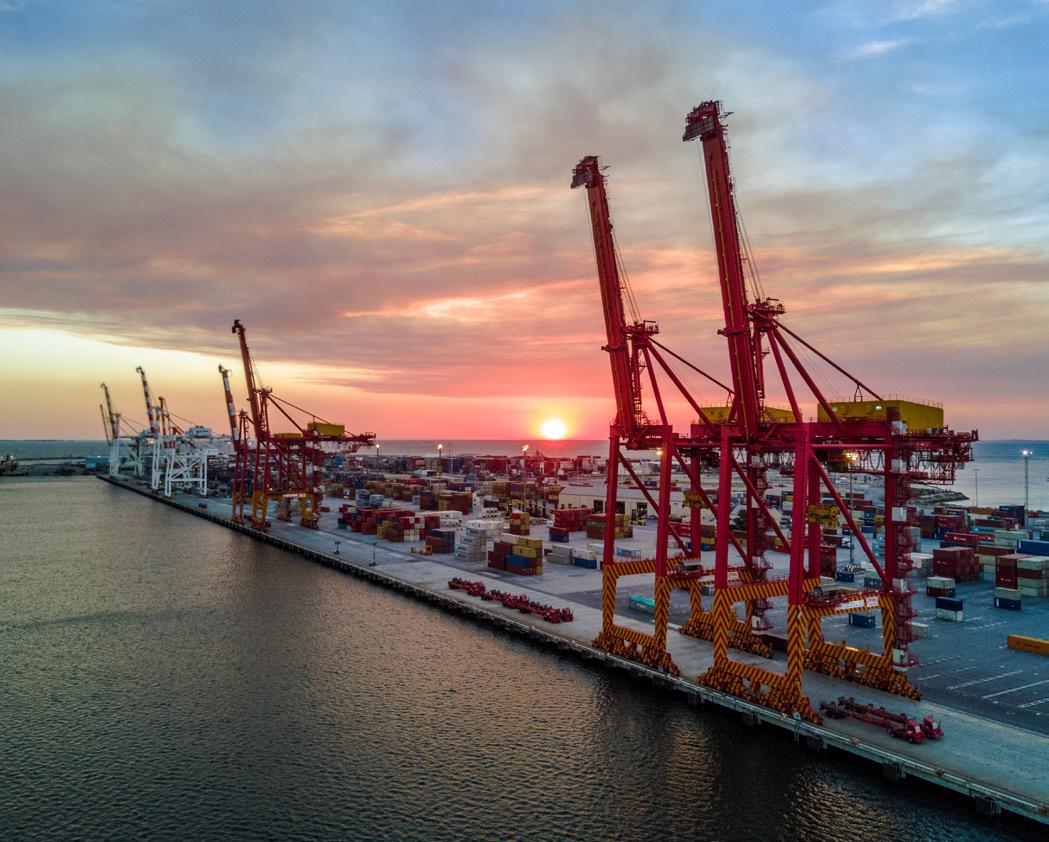
Aside from providing indispensable logistical links in handling all manner of cargo, the traditional role of ports, and the expectations that we have of them, are changing. As Australia’s gateways to the world, ports are essential nodes for trade and are fundamental economic drivers, however the role they play as both environmental partners and members of the community is of equal importance.
Moving on to coastal shipping today, the country relies on shipping for both international trade and domestic freight movements through coastal trading. As reported by Ports Australia, coastal shipping is less than 15 percent of the volume that moves through the country’s ports, with the remainder formed of international freight (93.7 percent).
The nation’s major ports and their surrounding infrastructure are key locations for supply chains involving bulk and container facilities. Some key players include the Port of Melbourne as the major handler of the country’s container traffic, and Port Hedland in Pilbara, WA. The latter primarily handles iron ore and is the largest bulk export facility in the world. Famously both the biggest, and busiest container port across the whole of Oceania, Port of Hedland hosts over 1,500 ships every year according to Marine Insight.
Nationwide, the ports sector is a major contributor to employment and job creation. Aside from opportunities working within or around the ports themselves, most jobs across the country are in some way or another reliant on ports as a means of import/export trade. For

THE PORT OF FREMANTLE IS THE LARGEST AND BUSIEST GENERAL CARGO PORT IN WA. IT HANDLES AUD$3.6 MILLION WORTH OF TRADE EVERY HOUR, 24/7.
instance, construction, retail, fashion, manufacturing, IT, and healthcare all rely on global imports, while industries including agriculture, energy, mining and areas of manufacturing are reliant on international exports. Aside from shipping, Australia’s ports are integral to the tourism industry, with many of the country’s operations handling cruise vessels as another key component of the economy.
In light of escalating global populations and the subsequent demand for goods, the realm continues to develop at breakneck speed purely in terms of handling capacity. Indeed, both Australia’s bulk commodity exports and metropolitan container imports are forecasted to double in size with each decade. This introduces major logistical issues, involving queues for both ships and the trucks waiting to deliver or deposit cargo on land – a hurdle that rose to the fore during the COVID-19 pandemic, as with the entirety of the global shipping sector.
In the face of this demand, the nationwide ports sector must walk a fine line between the preservation of functionality and future development while remaining mindful of its effect on surrounding communities and reconciling the best interests of all parties involved. This is largely overseen by the regulatory framework applied across all Australia’s ports, set by the Australian
Port of FremantleGovernment, although port operations themselves and investment are overseen by the private sector.
With each port, state and territory governments supervise the planning of land use, not just for the ports themselves, but their surrounding lands and interconnecting network of transport systems. On a wider scale, the overarching Australian Government undertakes assessment of the ports pertaining to matters of national environmental significance or overriding issues such as safety, security, or customs measures that affect the country’s maritime obligations.
Since there are a host of players involved – including port authorities and corporations – consolidation and collaboration within the sector is key to work towards its overall betterment. One such entity that seeks to represent the multifaceted network that comprises the country’s ports sector, is Ports Australia, whose membership encompasses the full gamut of port representatives, from government owned ports, privatised operations, state
marine regulatory authorities and the Royal Australian Navy. Equally as important as connecting Australia with the rest of the world, industry bodies such as this showcase the ways in which the ports themselves connect with and support their surrounding communities.
With all of Australia’s ports strategically located in central positions – either geographically or economically speaking – they naturally occupy a major space within their surrounding communities.
In recognition of their scope and impact, many ports take an active role within their social environments through corporate social responsibility (CSR) activities that contribute to community livelihood and help to foster interaction and positive perception in a mutually beneficial manner. This might involve the port working with local schools or providing grants for educational projects and sports teams, for example.

Efficiency is key in the supply chain industry, and OneStop is leading the way towards long-term success.
As a company, we have placed emphasis on modern tools and perspectives to innovate and create new products and services that will streamline the industry. Across 2023 and beyond, OneStop will introduce advanced data smarts and machine learning capabilities into our current and future product suite and business operations. The upcoming year presents an opportunity for all of us to commit to innovation in driving progress in the supply chain. By incorporating these technologies, OneStop aims to increase efficiency, improve decision-making, and transform operations for the entire community.
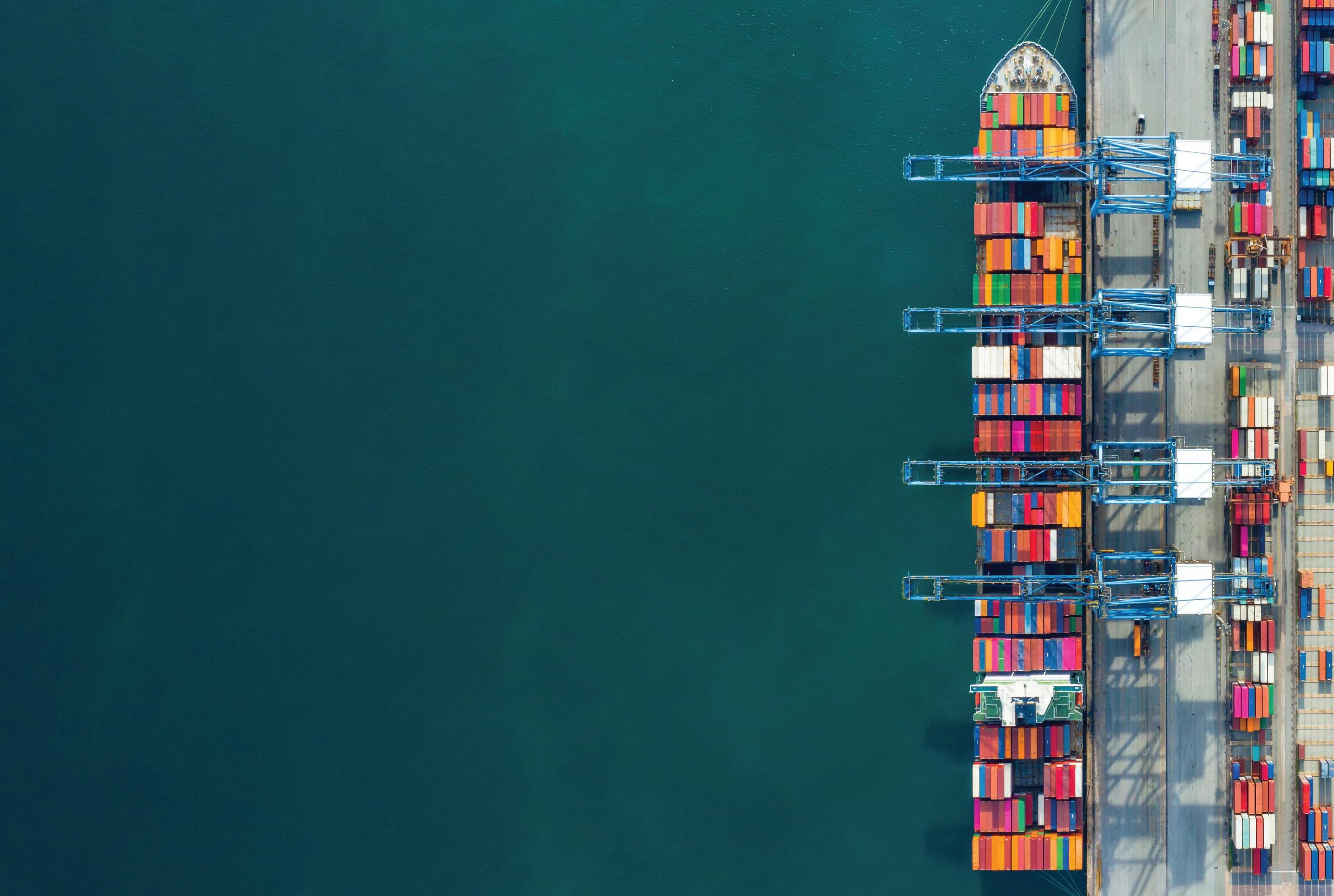
“This year marks the start of an exciting time ahead for OneStop! With our commitment to future forward solutions, we are integrating stateof-the-art tech and automation capabilities, aimed at delivering value for the entire industry. We are confident in the positive impact our efforts will bring in 2023 and beyond.”


While this is an increasingly common practice across sectors and expected of many entities regardless of industry as a demonstration of responsible corporate citizenship, the particular context of Australia introduces the need for recognition of the Traditional Owners of the land on which the ports are situated, pre-dating European settlement. Indeed, it is common practice for ports to formally acknowledge the original custodians of the land on which they conduct business prior to any meeting or networking event.
Putting this respect in practice, many players in the Australian ports sector undertake projects or work with Indigenous communities, recognising the legacy of their area of operation and its Traditional Owners. This might entail reconciliation action on the understanding that engagement with Traditional Owners is a critical part of business on an acute port and local community level. It is widely understood across Australia’s maritime landscape
and marine environment that successful partnerships between both parties can foster mutual empowerment that contributes to the overall betterment of the sector. As just one example of myriad initiatives taking place across the sector, Gladstone Port Corporation
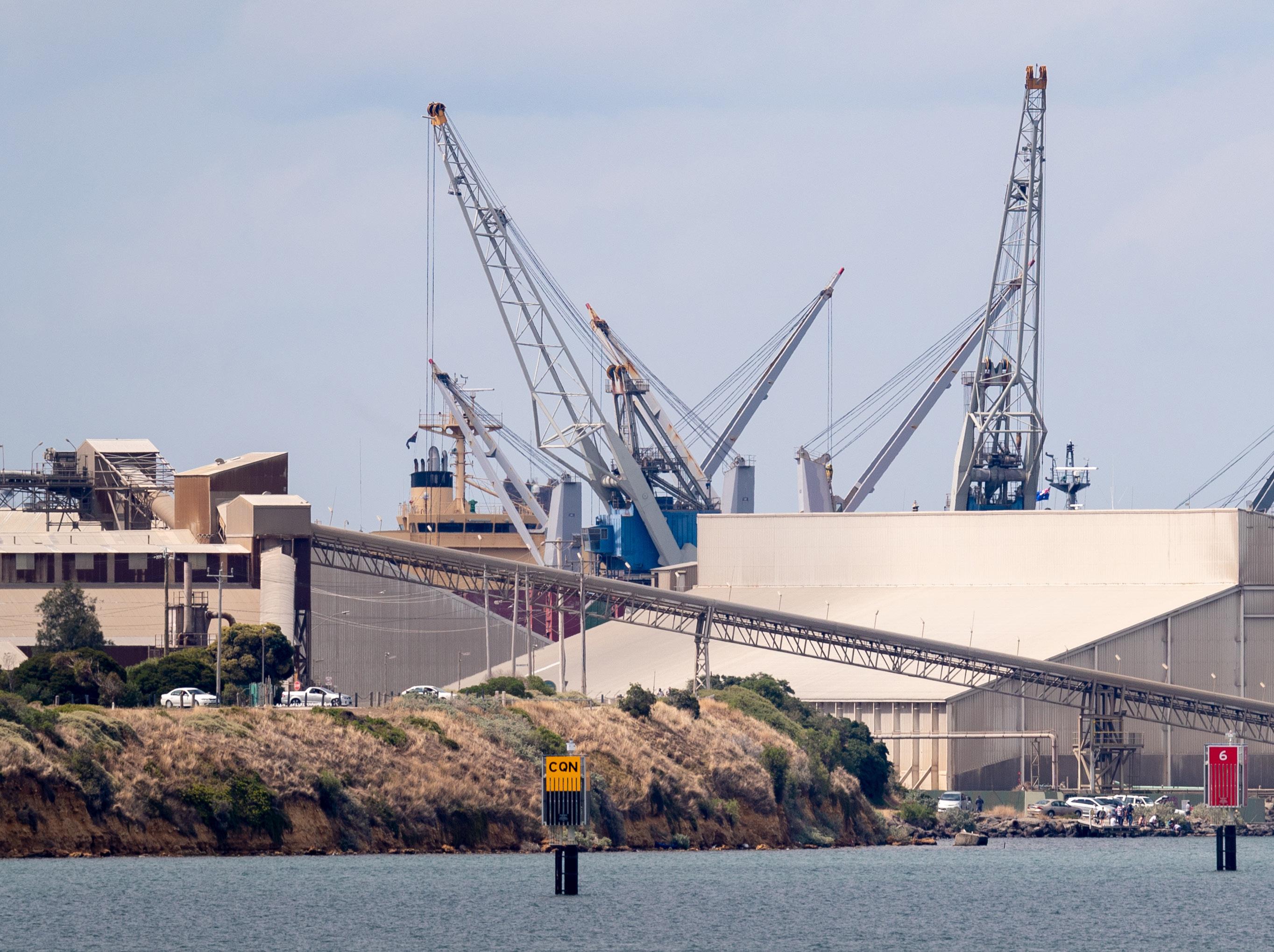
• AUD$7 BILLION OF TRADE
• 12 MILLION TONNES OF CARGO
• 1,800 REGIONAL JOBS
• 600 VESSEL VISITS
(GPC) - a multi-commodity port based in Queensland - acknowledges its location on the original lands of the First Nation peoples Bailai, Gurang, Gooreng Gooreng, Taribelang Bunda, Darumbal, Kabi Kabi and Butchulla. Consequently, an Indigenous Land Use Agreement (ILUA) has been established between GPC and the Port Curtis Coral Coast (PCCC) people, which is referred to as ‘GPC and First Nations Bailai, Gurang, Gooreng Gooreng, Taribelang Bunda People Aboriginal Corporation (RNTBC) ILUA’. This voluntary partnership ensures the responsible and respectful management of the lands and sea on which GPC does business to deliver sustainable and mutual prosperity.
This is furthered by the port’s Resources and Infrastructure Traineeship, which commenced in 2016 and is a two-year programme rotating between four key areas of the ports: marina office, building services, warehouse and parks and gardens. Once completed, trainees obtain
a Certificate II in Resources and Infrastructure Work Preparation, with the programme specifically designed to support the region’s future Aboriginal, Torres Strait Islander and Australian South Sea Islander leaders in their journey from education and training to employment and long-term career pathways. The Traineeship highlights GPC’s ongoing commitment to genuine reconciliation and equal opportunities.
Projects that work collaboratively with stakeholders to solve problems, share knowledge for the collective good and improve the community environment are an integral component of port operations.
In the context of the escalating climate crisis, the port sector, as with all industries, is embracing the transition towards a more environmentally friendly means of operation. With sustainability planning widely considered


Victoria International Container terminal (VICT) is a world leading port facility when it comes to innovations and port automation. VICT is the world’s most advanced container terminal, offering advanced automation and technologies from ship to shore. It has been a goal for the business to continue to raise the global benchmarks through delivering world-class performances for our landside and waterside services, and customer experience, to establish itself as the gateway to Victoria’s supply chain. Based outside the Westgate Bridge, VICT
offers the only accessible container terminal in Melbourne capable of handing the next generation of larger vessels connecting Victoria to the world. The location allows for quicker berthing and departures, saving time travelling up the river, allowing larger vessels to call without sailing under the bridge. The Port of Melbourne’s location is positioned just off the junction for the major freeways, so landside operators can move in all directions across Melbourne with ease.
VICT‘s parent company, International Container Terminal Services Incorporated (ICTSI), is the
largest independent port operator in the world with 34 ports across 20 countries and six continents. VICT is ICTSI’s first entry point into Australia. The innovation behind VICT’s Webb Dock East terminal is the product of ICTSI’s experience, having been at the forefront of global port management for over 35 years.
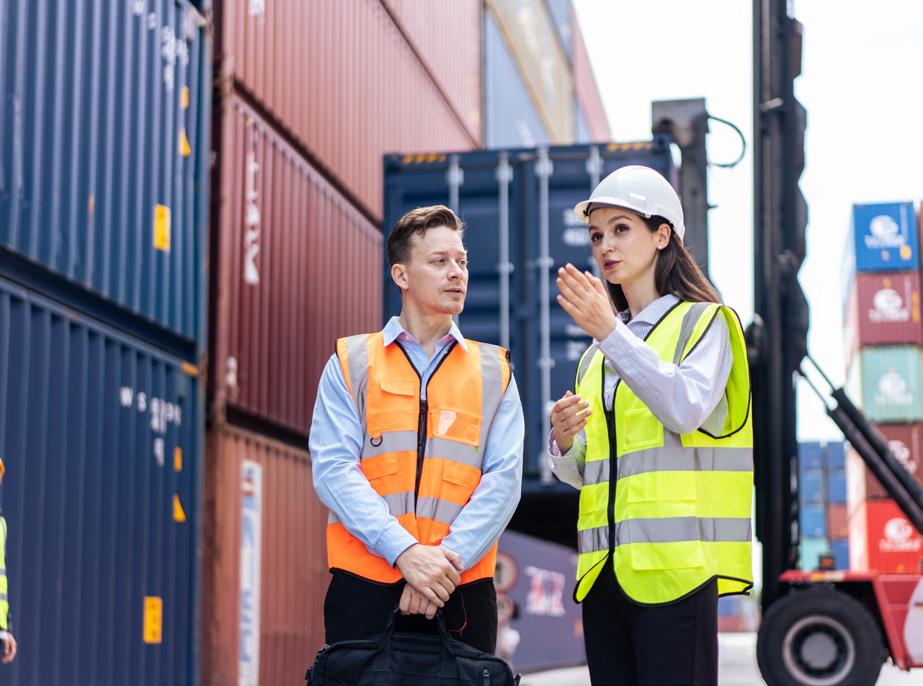

What makes VICT one of the most advanced container terminals in the world is the technology they utilise. VICT’s development delivers a leading global standard in modern container terminal design, innovation and operations, using best-proven technologies to deliver automated operations for both landside and shipside. The technology brings the equipment to life, ensuring it all runs smoothly, and our highly trained operators ensure that the machines and operation runs efficiently. Even with their automated container operation, VICT shines at its handling of break bulk and project cargo, dealing with everything from deconsolidation and over dimensional containers to heavy hook lifts.
The fully automated terminal consists of five neo-panamax sized ship-to-shore-cranes on a 660-metre (m) berth, 17 Automated Container Carriers (ACC) that transport the containers to and from the cranes to the container yard, and 20 Automated Stacking Cranes (ASC) that allow the operation to service landside and shipside operations at the same time. Along with the advanced Gate In and Out technology and block designs, VICT has built one of the most efficient terminals that benefits both sides of the supply chain.
Sustainability is a driving factor for the ICTSI group, something which factored heavily into


the design of VICT. To further develop their sustainability programme, VICT turned to community engagement to establishing positive, ongoing relationships with its neighbours. Through the VICT Community Investment fund, the terminal can positively contribute to support programmes which focus on health and education for young people within City of Port Phillip, City of Hobsons Bay, City of Maribyrnong and City of Wyndham.
Since their opening day, the goal has always remained the same; to provide a safe and reliable gateway for goods to consumers, while delivering a leading customer experience to our landside and shipside services. With the new expansion project, which includes three new yard blocks, with six new ASCs and two new neo-panamax sized ship-to-shore-cranes, whilst expanding the berth from 660m to 731m, VICT will support larger vessels and see an increased throughput to further advance the supply chain in Melbourne.
as an essential requirement for business success, ports across Australia are committed to demonstrating leadership in an operational environment to create positive change geared towards longevity and prosperity for all those involved.
With respect to carbon emissions in the transportation of commodities, port transport continues to be one of the lowest emitters in terms of efficiency compared to road transport or intermodal rail. The sector plays a major role within the wider national goal of the Australian government’s commitments of achieving the United Nation’s (UN) Sustainable Development Goals (SDGs) and adhering to the 2030 Agenda for Sustainable Development.
As a result, many ports are now officially incorporating decarbonisation into their master planning, including accounting port contributions into the Scope 3 emissions of their customers, and setting in stone their alignment with key industry initiatives, like the Sustainable Strategy Development Guidelines, as developed by Ports Australia. Aside from optimising the internal operations of the ports themselves, these nodes of transport are critical to accelerating the energy transition of the country as a whole in facilitating the implementation of renewable energy sources, with offshore wind power as the most obvious example.
Currently, as Australia is embarking on an exciting foray into offshore sites for wind power generation, ports are stepping up to the plate by bringing these projects to fruition, fulfilling a crucial logistical role in their successful construction and servicing.
Alongside this ongoing development, a host of exciting projects are underway across the field that seek to manage environmental surroundings, reduce carbon emissions,
help to facilitate the clean energy transition, improve air and water quality or stimulate a circular economy.
2022 saw a major breakthrough in this area, with the announcement of the world’s first 100 percent renewable energy precinct due to be launched in Sydney Harbour. Catering to international bulk ships and cruise vessels, this is the first bulk shipping precinct of supply of shore power and the first for cruise ships in the southern hemisphere.
Shore power entails the provision of shoreside electrical power to a ship at berth whilst its main auxiliary engines are shut down, thereby reducing the air pollution emissions typically resulting from the consumption of fuel. The new precinct is anticipated to remove up to 14,000 tonnes of CO2 over a 12-month period.
An area ripe for future development – much like offshore wind - shore power promises to be a fruitful avenue that best demonstrates the results of healthy collaboration between industry and government in working towards a sustainable Australia, together.

As reflected by these commitments and endeavours in working towards shared goals, today, there is an increasing degree of inter-regional connection and collaboration between ports in Australia and surrounding countries such as New Zealand, Papua New Guinea (PNG), the Solomon Islands and the South Pacific, as they are all confronting similar conditions with respect to the climate.
With all the essentials of daily life primarily transited through a port, a healthy and efficient port system – on both sea and land - has the universal benefit of lowering the cost of living and increasing the competitiveness of the country’s exports, whilst also driving sustainable growth. They must therefore be seen as a healthy and necessary contributor for the benefit of all Australians.
We created an unrivalled level of service with a 50-year track record of paying claims.
For insurance you can depend on visit ttclub.com
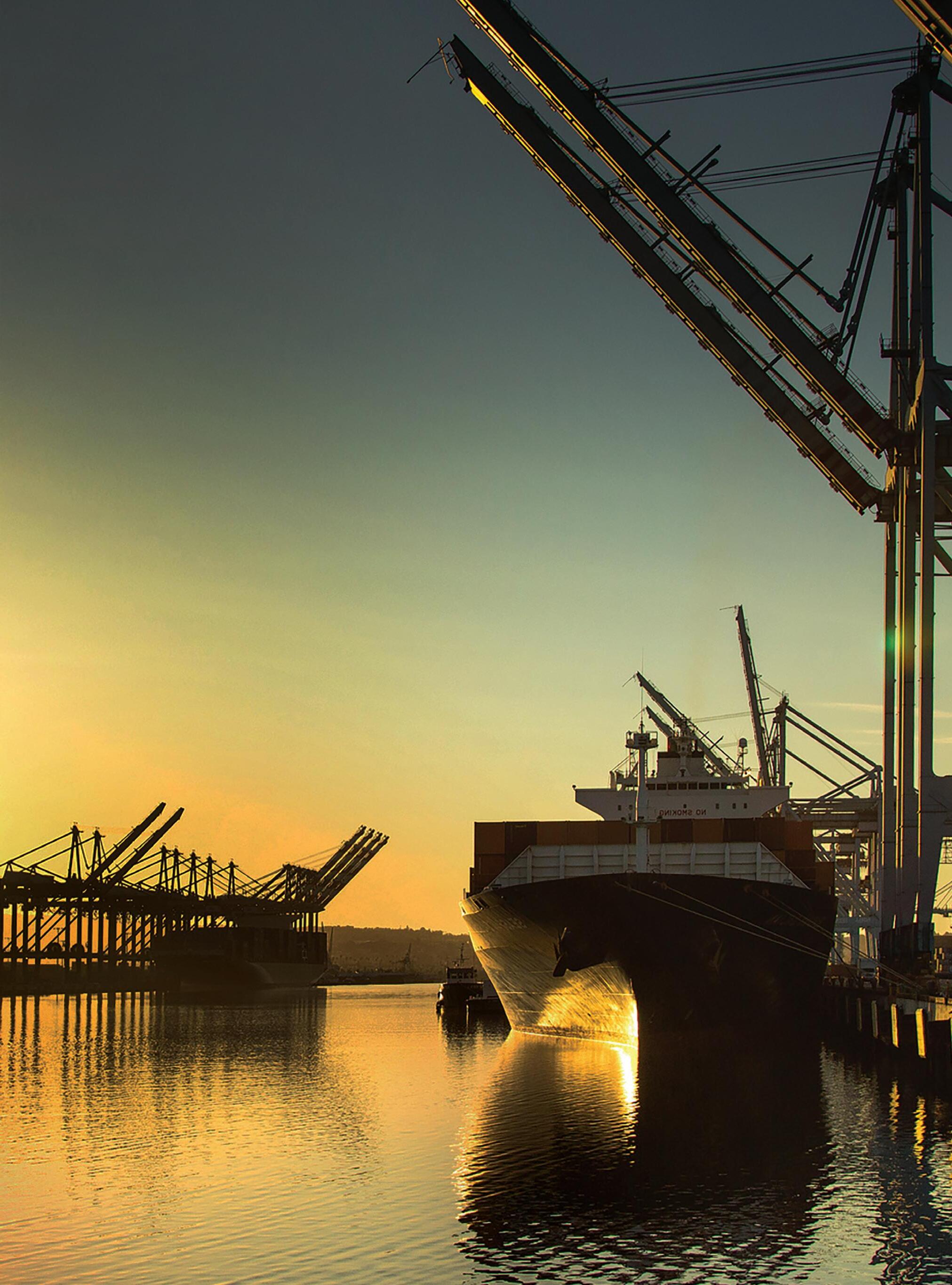
leadership to sustain the port communities while fostering economic, innovative and sustainable growth.
Advancing Australia for over 100 years, Ports Australia is the national peak body representing government and privately owned ports. Its membership accounts for over 95 percent of Australia’s imports and exports.
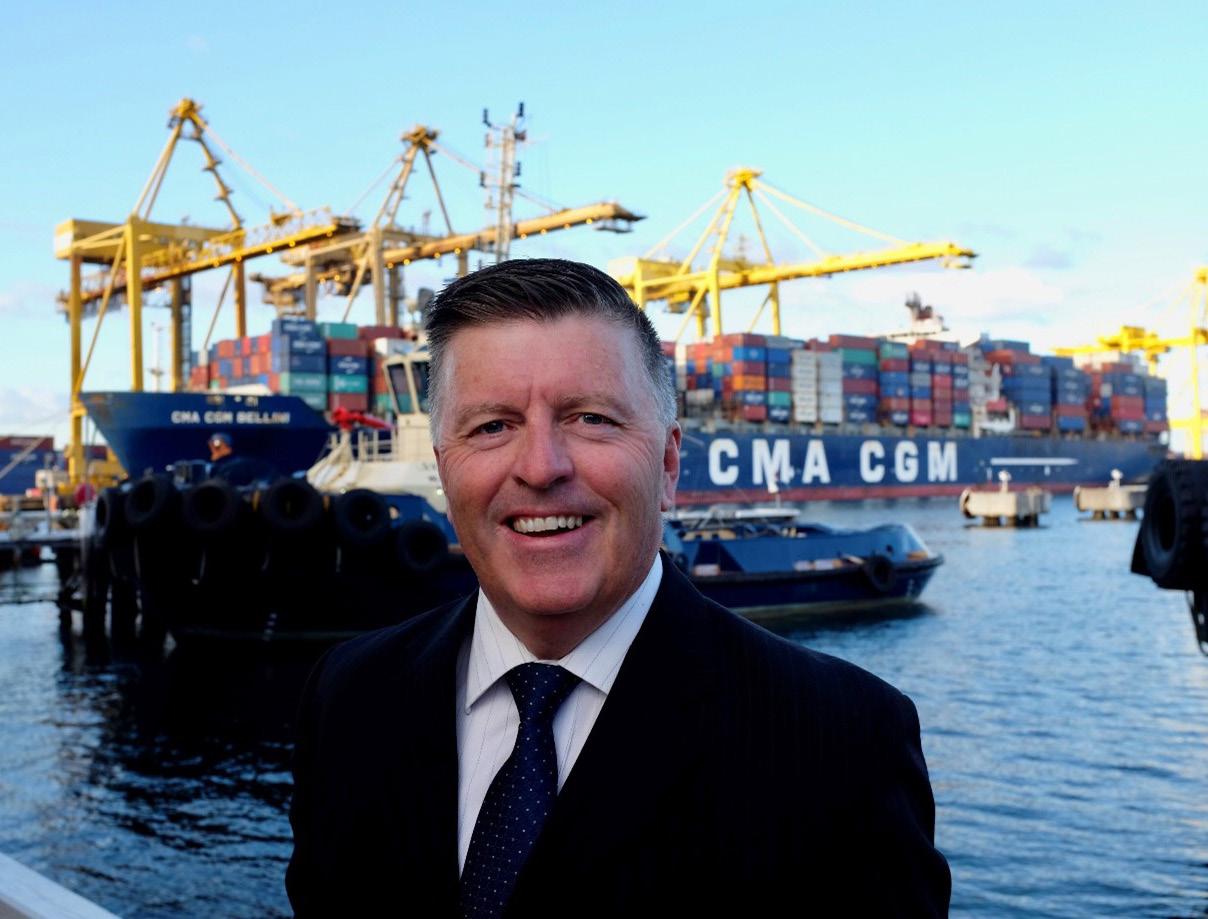
Formed at the first interstate harbour conference in 1916, Ports Australia has provided advocacy, coordination and
Port authorities and corporations together with the Royal Australian Navy form part of its membership, along with various support service companies in the port sector. The association’s core membership consists of 21 full members from across Australia, several of which have multiple ports under the organisation, along with other associate members that are businesses related to the ports industry, representing everything from engineering to IT groups. Ports Australia itself is divided into several different working groups, ranging from accounting and human resources to communications, corporate affairs and port operations. Each group has all ports and most associate members, and they are often also attended by government officials as well.
Ports Australia’s network also comprises associate international members, including several ports across New
As the sector’s collective voice, Ports Australia is the association striving for sustainability, inter-regional connection, and promoting the longevity of quality marine assets that adhere to stringent quality and safety standards. CEO, Mike Gallacher, tells us more
Our vision is to be the global leader in port planning, operations and marine services. In 2021/22 Pilbara Ports Authority achieved a throughput of 733.1 million tonnes, worth an estimated AU$168 billion.

www.pilbaraports.com.au
feedback@pilbaraports.com.au
Zealand, PNG, the Solomon Islands and the South Pacific. With each location facing similar climate issues, this farreaching remit aims to facilitate knowledge sharing and a mutually beneficial collaborative approach whereby each country can learn from the other. Above all, Ports Australia exists as a means of support for these heavily port-reliant nations across Oceania. As such, the association is heavily involved in fulfilling an advocacy role and working closely with both state and federal governments on the primary issues and challenges facing the sector.
A major recent undertaking from Ports Australia is the Wharf Structures Condition Assessment Manual (WSCAM) - an industry-leading initiative that has been reviewed by Ports Australia’s engineering and asset management working group as a means to consolidate and implement a uniform guideline in terms of the expected standards of wharf conditions and safety requirements. Although WSCAM was officially released just last year, it has

The Manual is a recognised asset management tool to help asset owners with consistent and repeatable inspections of a wide range of asset types including but not limited to wharves, piers, jetties, walkways, breakwaters, revetments, embankments, and other fixed assets. It contains a condition inspection framework and visual assessment tool, both of which are flexible for user customisation.
The Manual has been developed to promote the use of best practice methods for the inspection and condition assessment of wharf structures. WSCAM is designed to enhance data collection efficiency and assist in moving towards a consistent approach for condition assessment of wharf structures in Australia.

“OUR MEMBERS ARE TRULY AT THE FOREFRONT OF THE DEBATE AROUND TOPICAL ISSUES SUCH AS ALTERNATIVE FUELS, AUTOMATION, AI, AND SUSTAINABILITY”
– MIKE GALLACHER, CEO, PORTS AUSTRALIA
Delivering complex and sensitive maritime operations for governments

• Vessel design and build
• Vessel operations and crewing
• Vessel repair, maintenance, and technical support
• Marine support services
• Acquisition and complex project management
• Training, education and professional development
• Fire and rescue services
• Ship charter services, logistics and operational support
• Asset and facilities management
More than 30 years’ operating in Asia Pacific, employing around 14,000 people across Australia, New Zealand, and Hong Kong. Managing more than 270 maritime assets across five waterfront locations in Australia.
become widely used across all Australian ports and port-related bodies such as local councils that may have marine or wharf assets and is available for purchase by any player in the maritime space. By setting a guideline for the maintenance of assets, involving safety standards, cost-effectiveness and a level of maintenance that will

PORT OPERATIONS – Also includes the Hydrographic/ Marine Surveyors sub-groups. Focuses on operations and navigation capabilities, management, regulation, safety, and ensuring the provisions of the National Plan for Maritime Environmental Emergencies are effectively facilitated.
ACCOUNTING, FINANCE AND GOVERNANCE - Focuses on financial, economic, taxation, legal, insurance, audit and risk, and other governance matters relevant to ports.
LOGISTICS - Focuses on logistic management and performance issues at the port, any relevant supply chain matters, and relevant regulatory issues.
INFORMATION TECHNOLOGY - Focuses on information and communications technology developments in the ports sector, its application to port operations, and any policies that govern its application at ports.
ENGINEERING - Focuses on infrastructure management and maintenance, construction and redevelopments at ports and considers the effectiveness of any overarching policies (e.g. Standards Australia) for port practitioners.

CORPORATE AFFAIRS AND COMMUNICATIONSFocuses on communications that promote ports with consideration of effective strategies and mediums, key stakeholders, brand management, drivers, and data. Also considers internal corporate communication matters.
contribute to their longevity, WSCAM is instrumental in fostering sector sustainability.
In terms of environmental sustainability, Ports Australia is key in driving this agenda across the sector having published guidelines for all relevant parties to comply with. Ports Australia recognises that sustainability is relevant to all aspects of the port business, stakeholders and along supply chains, and is taking action to support government and the ports in policies and initiatives that are sustainable.
Several such examples that seek to support the sustainable prosperity of ports across Australia and in the geographies of its associated international members include the development of industry guidelines (the Port Sustainability Strategy Development Guide), the facilitation of knowledge sharing across the industry through communities of practice and the Sustainability Hub (as a readily available online resource), and finally through the extensions of ports connections across New Zealand and the Pacific.
“WE WORK WITH THE TRADITIONAL OWNERS OF THE LAND TO IDENTIFY WAYS IN WHICH WE CAN GET NOT JUST YOUNG INDIGENOUS MEMBERS OF THE COMMUNITY INVOLVED IN THE PORTS WITH SKILLS AND ACCESS TO TRAINING, BUT ALSO THE WIDER COMMUNITY”
– MIKE GALLACHER, CEO, PORTS AUSTRALIA










Australia is a key player in the global maritime industry, with its ports and logistics sector being an integral part of the nation’s economy. The sector has been significantly impacted by the COVID-19 pandemic, causing disruptions to global and regional trade. However, Australia has shown remarkable resilience and has continued to adapt to the changing landscape of the industry.
One of the significant shifts in the industry is the increasing demand for clean energy alternatives. As the world shifts towards sustainable energy, Australia has a significant opportunity to lead the way in the production and export of LNG, green hydrogen and green ammonia. This presents a unique opportunity for Australia’s ports and logistics sector to adapt and invest in infrastructure and technologies to support the growth of these new industries.
Supply chain resilience has become a critical aspect of the ports and logistics sector, especially in the face of climate change impacts such as extreme weather events and rising sea levels. Ensuring that ports are equipped with the necessary infrastructure and technology to withstand these impacts is essential to the industry’s success. Australia’s ports have already made significant progress in this area, with many investing in renewable energy sources and implementing strategies to reduce their carbon footprint.
BMT, a leading engineering and science consultancy firm, is well-equipped to provide complex solutions to the ports and logistics sector. With over 35 years of experience in the industry, BMT has worked with some of the largest ports in the region, providing




tailored solutions to meet the specific needs of each port. The company’s expertise in the areas of sustainability, resilience, and digitalisation makes it a valuable partner to Australia’s ports and logistics sector as it continues to adapt and evolve in the face of new challenges.

Australia’s ports and logistics sector is poised for growth and transformation, with a focus on clean energy alternatives and supply chain resilience. With the right investments in infrastructure and technology, the industry can continue to adapt to the changing landscape and remain a key player in the global maritime industry. BMT’s expertise in providing complex solutions can help to ensure that Australia’s ports and logistics sector remains competitive and sustainable for years to come.

This work also translates to social sustainability, in terms of respecting local cultures and the Traditional Owners of the land, working closely with the Indigenous people of Australia. Ports Australia acknowledges the Aboriginal and Torres Strait Islander peoples of Australia and acknowledges the traditional custodians of the lands on which its ports are located. The association is committed to respecting Aboriginal and Torres Strait Islander peoples’ unique cultural and spiritual relationships to the land, waters and seas, and their rich contribution to society. This centres on healthy relationships with the local community across areas of operation, with opportunities for skills development, training and employment opportunities that are dedicated to socio-economic well-being with a respect for the land.
Fulfilling an active and essential role in Australia’s port sector, we find out more about the association today in conversation with CEO, Mike Gallacher.

APAC Outlook (AO): Could you provide us with a brief insight into the organisation’s history and Ports Australia’s membership?
Mike Gallacher, CEO (MG): The organisation has been in place for over 100 years. In fact, we celebrated our centenary in 2016, and of course there has been significant evolution during that time with ports being publicly owned and operated and the move towards the privatisation of those assets. Change is a constant in this field as ports, alongside all other areas of the supply chain, have continued to develop and professionalise. We now find ourselves in a position where the majority of our members are still publicly owned, but we also have large capital city ports primarily within the container space.
AO: What is your current take on the ports sector across Australia?
MG: A great thing we have just undergone is a public inquiry conducted on behalf of the Federal Government, looking at the ports sector. There was a lot of misunderstanding of just how the ports sector was travelling, particularly around investment and how
INDUSTRIAL RELATIONS AND HUMAN RESOURCES
- Focuses on human resources policies and practices concerning remuneration, management and negotiations of EAs/EBAs, awards (including the protection of the Port Authorities Modern Award), performance management, and changes in the industrial relations environment.
WORK HEALTH AND SAFETY - Focuses on the organisational management of health and safety of employees, contractors and visitors at ports, including incident reporting and relevant policy/legislative implications.

ENVIRONMENT, PLANNING AND SUSTAINABILITY
- Focuses on the planning and access management to the ports, environmental matters of the ports (e.g. dredging, climate change, regulatory implications) and the surrounding environment affecting the ports, and vice versa. The sustainability contingent focuses on how member ports are planning their role in the sustainable future of the Australian supply chain.
PORT SECURITY - Focuses on security management, operations and regulations at ports.
LEGAL - Focuses on the organisational management of legal matters affecting the business.
“THE MAIN THING IS THAT OUR PORTS HAVE THEIR EYES ON THE HORIZON AND BEYOND”
– MIKE GALLACHER, CEO, PORTS AUSTRALIA
Your Asia-Pacific dredging specialists.
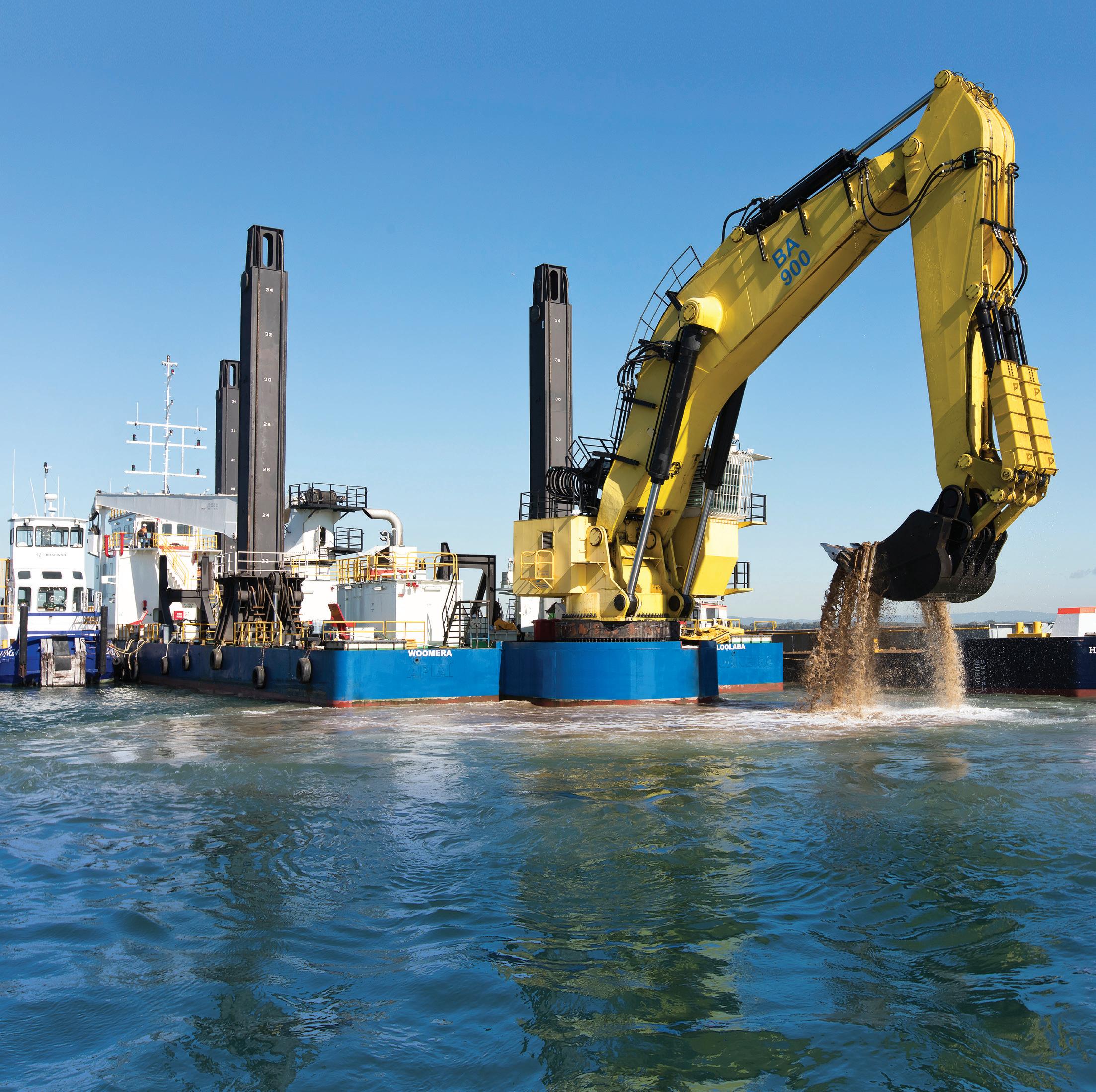
we are keeping pace with the challenges of the global supply chain. As a result of that independent inquiry, it has become apparent that Australian ports are in a fairly healthy state with the investments that are being made for the required infrastructure and planning for the future. The main thing is that our ports have their eyes on the horizon and beyond. Some of their plans extend many years ahead, even generations ahead in fact. Our members here are truly at the forefront of the debate around topical issues such as alternative fuels, automation, artificial intelligence (AI), and sustainability. These are all fundamental to the issues that we are having here in Australia.
AO: On the topic of sustainability, could you outline some of the key ways in which the association Is working towards a more sustainable Australia? Are there any projects you would like to highlight in this regard?
MG: We started seriously talking about this several years ago, when we saw that right across the country, Australian ports had begun to embark on their sustainability journey. We identified the need for a greater understanding of where there were potential gaps in the approach that we took. So, we developed a sustainability guide to assist ports in the creation of a level playing field, in so far as the approach that they took could go above and beyond that. For us, it was about saying to our members that we are creating an environment where we are all using the same compass in terms of direction, and how far you want to go is a matter for you to decide.
CASE STUDY: NSW PORTS

NSW Ports has supported some Indigenous initiatives as part of its Community Grants Program (2021 and 2022 rounds) including:
SYDNEY CHILDREN’S HOSPITALS FOUNDATION: Its grant supports The Ngala Nanga Mai pARenT Group Program, which involves weekly art workshops at the La Perouse Aboriginal Community Health Centre. Through art making, the arts and health programme empowers young Aboriginal mothers to grow their sense of engagement and community, with a focus on improving maternal emotional and mental well-being.
WARRAWONG PUBLIC SCHOOL: This grant has been used to create a yarning circle, garden and Indigenous murals for the whole community. This includes interpretive signage to help identify plants and their usage, as well as QR codes linking to educational audio and video materials created by the students and the local community.
ENFIELD PUBLIC SCHOOL P&C ASSOCIATION: Its grant is being used to build a sensory playground and yarning circle for the school and local community to enjoy.
LA PEROUSE NETBALL CLUB: Its grant was used to increase First Nations player coaching and participation in a culturally safe learning environment within the Randwick Netball and St George Netball Associations.
The Gateway to Northern Australia is continuing to widen with the Port of Townsville undergoing continuous improvements to increase its handling capabilities and efficiencies.
With the Port of Townsville’s trade expected to treble in the coming decades, the team’s largest challenge is achieving sustainable growth that addresses the needs of more then 30 existing commodities, along with new and emerging trades, particularly in the areas of hydrogen and renewable energy.

The Port of Townsville’s General Manager of Major Projects, David McLoughlin, says the current Channel Upgrade project is on track to see larger vessels accessing the Port by late 2024.
“The Channel Upgrade is the largest infrastructure project in the Port’s 159 year history and is vital to ensuring trade, defence and cruise opportunities no longer bypass Townsville,” Mr McLoughlin says.
While the Port of Townsville is the largest multi-cargo port in Northern Australia, it had one of the narrowest shipping channels, making this project vital for future growth.
“We’ve recently celebrated the first anniversary of channel widening, with more than 1.65 million cubic metres of dredge material removed for beneficial reuse in our 62 hectare (ha) reclamation area. The reclamation, along with future stages of the Port Expansion Project, will pave the way for six new berths and associated infrastructure to accommodate existing and emerging trade opportunities.”
The Port of Townsville connects 800,000 North Australians with the rest of the world. Approximately 75 percent of the Port’s trade is conducted with Asian neighbours, allowing cargo to be transhipped anywhere in the world.

Port of Townsville Chief Operating Officer, Drew Penny, said importers were also beginning to recognise the potential for transhipping goods to Australian markets via Townsville.
“The Port of Townsville has excellent road and rail connectivity and, being only two days’ steaming time from Singapore, efficiencies are just waiting to be unlocked between Townsville and Rockhampton to the south, west to Mount Isa and the Northern Territory, and north to Cairns and the Tablelands,” Mr Penny said.
In October 2022, the Port of Townsville saw its first transhipment of motor vehicles from Japan to Port of Brisbane.
“The Port of Townsville’s motor vehicle hub has 1,700 sealed spaces for vehicle laydown, making it the ideal place to address limited capacity at other ports,” says Mr Penny.
“We are currently constructing new multi-purpose laydown areas to enhance our storage capacity for breakbulk and project cargo, as well as working with industry to make necessary supply chain adjustments that will make Townsville a more viable option for regular transhipments.”
THE PORT OF TOWNSVILLE’S CAPABILITIES INCLUDE:
• 8 berths including dedicated cruise and defence berth
• Ro-Ro and Lo-Lo facilities
• Pilotage and Towage services
• Liebherr Super Port-Panamax StS crane
• Bunker services
• Heavy-lift and project cargo
• 1.6ha wharf-adjacent cargo terminal
• Container and refrigerated cargo
• Direct-to-berth access for triple road trains
• Excellent intermodal connectivity
• Truck staging area
• Channel 11.7m deep and 92m wide (widening currently underway).
Now, we are looking at a host of projects, from decarbonisation through to noise pollution, and particularly considering emissions incentive schemes since shore power is a big issue here. We really work right across the whole board in terms of environmental issues.
AO: Can you tell us more about your recent WSCAM initiative?
MG: This has been a big area of investment for us and to our understanding, there is very little like it anywhere else in the world. What that shows is that as an organisation, we are prepared to invest in the development of technology or identifying the areas of technology that will make wharf structures last longer, but doing so in a way that they maintain safety and standards that are consistent right across the board. Commercially speaking, obviously it’s an advantage to ensure those assets last as long as they can, but this is all done through a prism of sustainability to ensure that we’re not wasting resources.
WSCAM has been launched here in Australia, but it’s also a tool that can be rolled out globally to say that if you’re running assets in the marine environment, you need to be aware of their condition, not only for the safety of your workers and those coming to your site, but also to guarantee their longevity. We are proud that we have developed such a tool. Its actual creation took place many years ago, but it has had to be revisited due to advances in technologies, including drones, and the growing understanding of alternative materials being used within
TasPorts acknowledges that prior to European occupation in 1803, Tasmania was home for millennia to the palawa Aboriginal people, belonging to nine distinct nations. The palawa were great seafarers and adventurers who were highly skilled navigators with a thorough knowledge of Tasmania’s waterways.
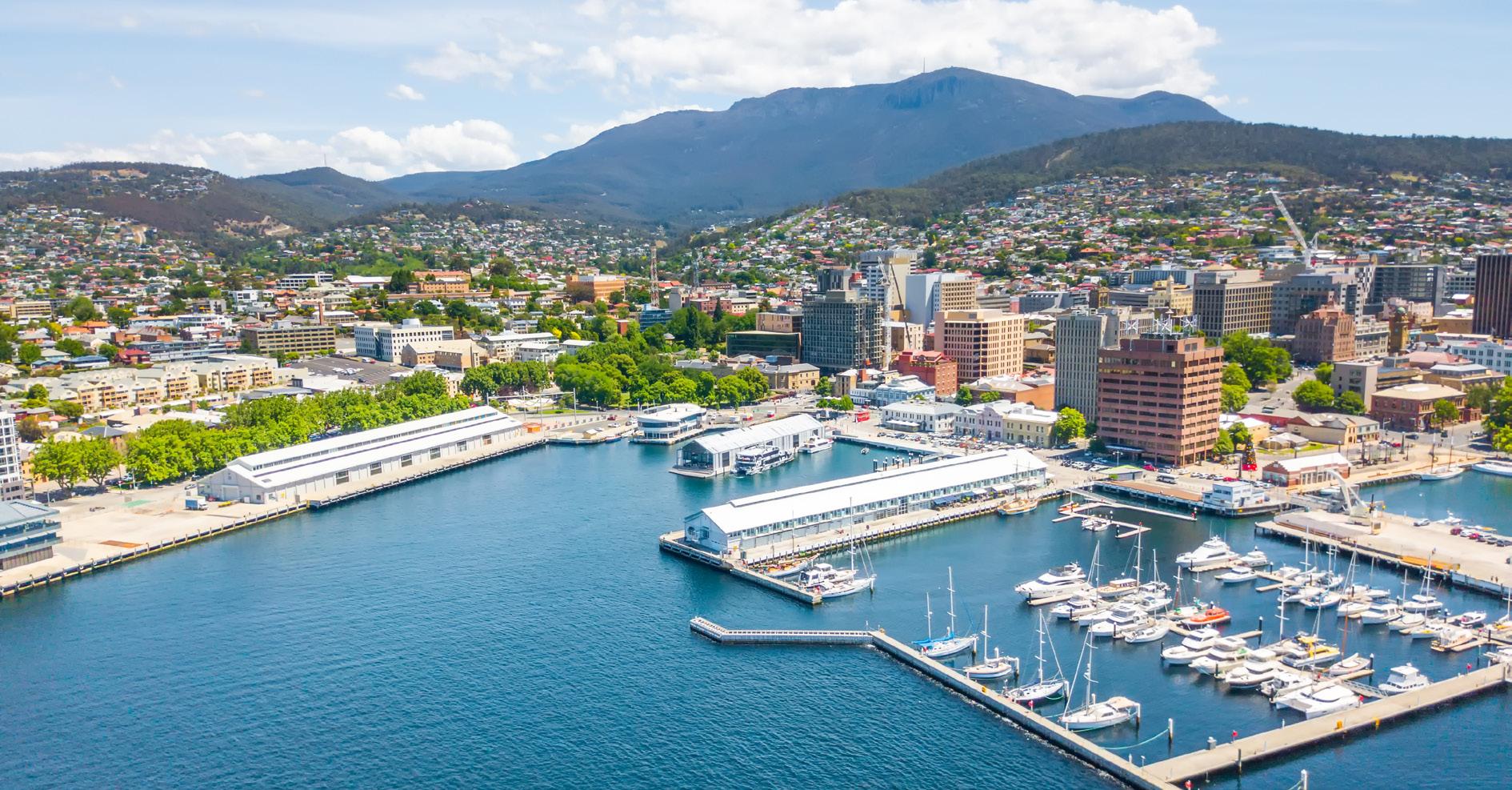
Indigenous maritime history was not only acknowledged but also celebrated during the recent Australian Wooden Boat Festival (Hobart - 10th February 2023). While some of the vessels showcased during the event had strong ties to Tasmania’s colonial history, Tasmania’s Indigenous maritime history was proudly celebrated when, as part of the festival opening, the Tasmanian ningher watercraft project – A Living Art Form - was launched.
A collaboration between festival organisers and Sheldon Thomas, palawa man and Indigenous canoe builder, the project celebrates Tasmania’s Indigenous maritime traditions, with the maritime environment a crucial component of the country for many Indigenous Tasmanians. A respected artist and canoe builder, Sheldon teamed up with the festival and Chris Ganabarr, yolnga man and Aboriginal youth worker, to build the largest canoe to feature along Hobart’s waterfront.
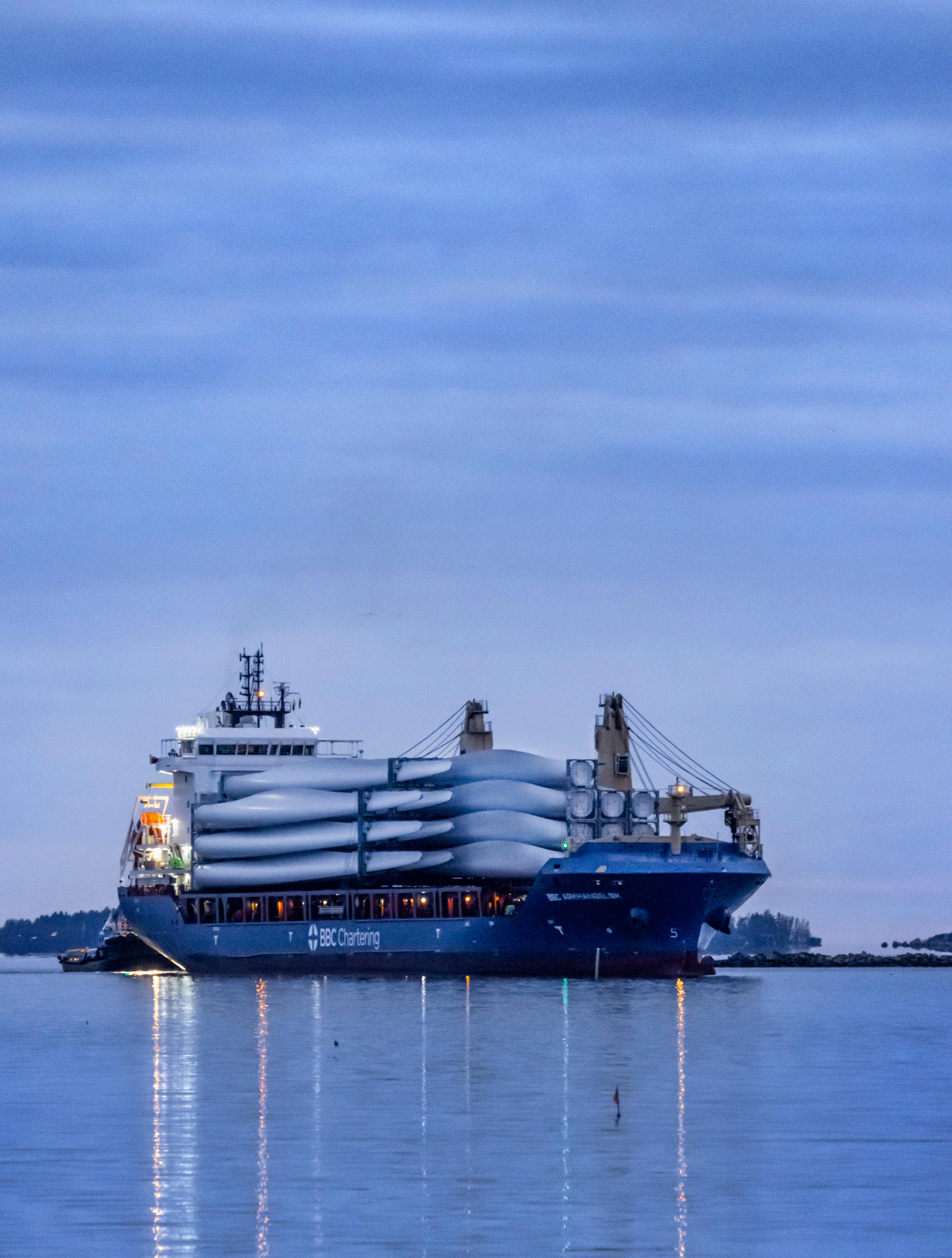
the ports. It’s not only about promoting sustainability, but also assisting ports, governments and other institutions that have structures in the marine environment. We are giving them a guideline to understand what is accepted within our sector concerning the conditions of assets.
AO: In terms of social sustainability, could you touch on why it’s important for Ports Australia to acknowledge the Aboriginal and Torres Strait Islanders peoples of Australia?

MG: We are very fortunate in that all of our ports obviously operate on traditional lands, and for many of these regional communities, it’s not just about our relationship in terms of the sustainable use of that land, but also how we can engage with the local Indigenous community to have them become more involved. This might include working with those communities with reconciliation action plans whereby we work closely with them in relation to its development, but it also involves employment opportunities as well. We work with the Traditional Owners of the land to identify ways in which we can get, not just young Indigenous members of the community involved in the ports with skills and access to training, but also the wider community. So, it’s extremely important to us. In any area that we work in, we begin by acknowledging the
NQBP’s vision of reconciliation is for an Australia that embraces and values Aboriginal and Torres Strait Islander peoples, histories and cultures, and promotes diversity, providing equitable opportunities for all Australians. It’s vital to build genuine, two-way relationships with Aboriginal and Torres Strait Islander peoples to identify real and sustainable opportunities that lead to positive outcomes for everyone.
NQBP supports Aboriginal and Torres Strait Islander businesses through economic participation strategies. The most comprehensive that has been implemented to date is with Juru Enterprise Limited (JEL), based in Bowen. This company provides land management services to NQBP at the Port of Abbot Point. NQBP and JEL have worked closely over the past 10 years to build a strong working relationship, business capability and sustainable performance.
The Australian Maritime Safety Authority is at the forefront of Australia’s ports, with our frontline staff regularly inspecting ships in our waters.
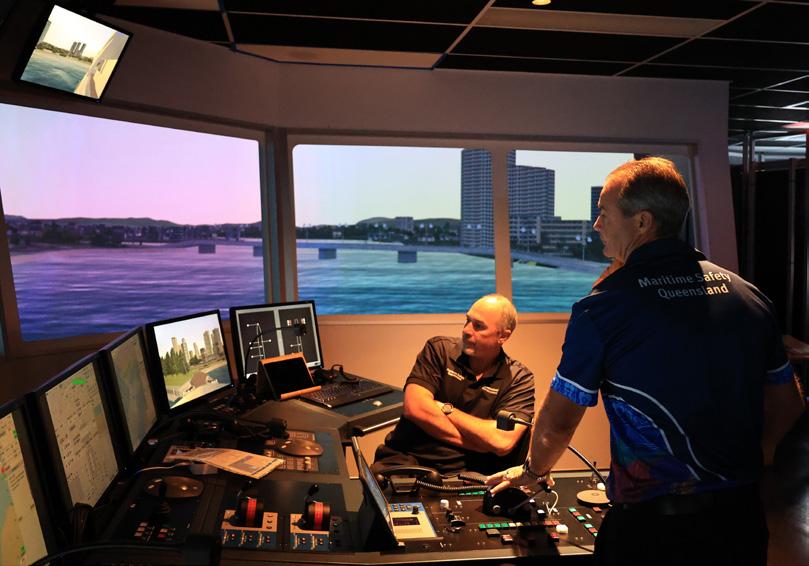
AMSA’s intelligence-led and risk-based approach to compliance uses data to focus our efforts, which is why we are putting watertight and weathertight integrity issues in the spotlight and reminding all ships entering Australian waters to ensure watertight and weathertight components are addressed as part of planned maintenance.
• Visit AMSA’s campaign hub on watertight and weathertight integrity.
• Read AMSA’s 2022 Inspections Report, including an analysis of emerging trends and risks to safety.

MSQ is responsible for:
• Providing essential maritime services such as aids to navigation and vessel traffic services, including Harbour Masters located in each of our regional ports and locations.
• Minimising vessel-sourced waste and responding to marine pollution.
• Significant compliance functions with its Maritime Enforcement Team and other Marine Officers, improving maritime safety for shipping and recreational craft through regulation and education.

• Encouraging and supporting innovation in the maritime industry.
• Maintaining key capabilities for managing maritime emergencies, ranging from shipping incidents and shipsourced pollution to high level natural disasters as, the lead agency for maritime response, with highly-trained teams ready to deploy.
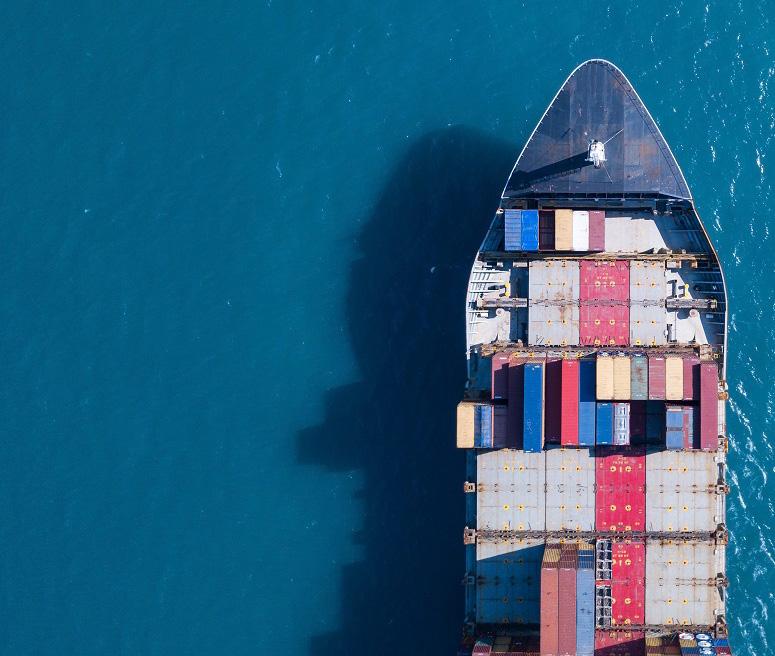
 AMSA Connect 1800 627 484
AMSA Connect 1800 627 484
“Find it, fix it, and keep your ship watertight”
Traditional Owners of the land, and the same applies to the beginning of any formal meeting that we participate in. I think that in itself is an indicator of the level of respect that we have for these communities.
AO: Looking ahead, what are some of Ports Australia’s key priorities for the immediate future?
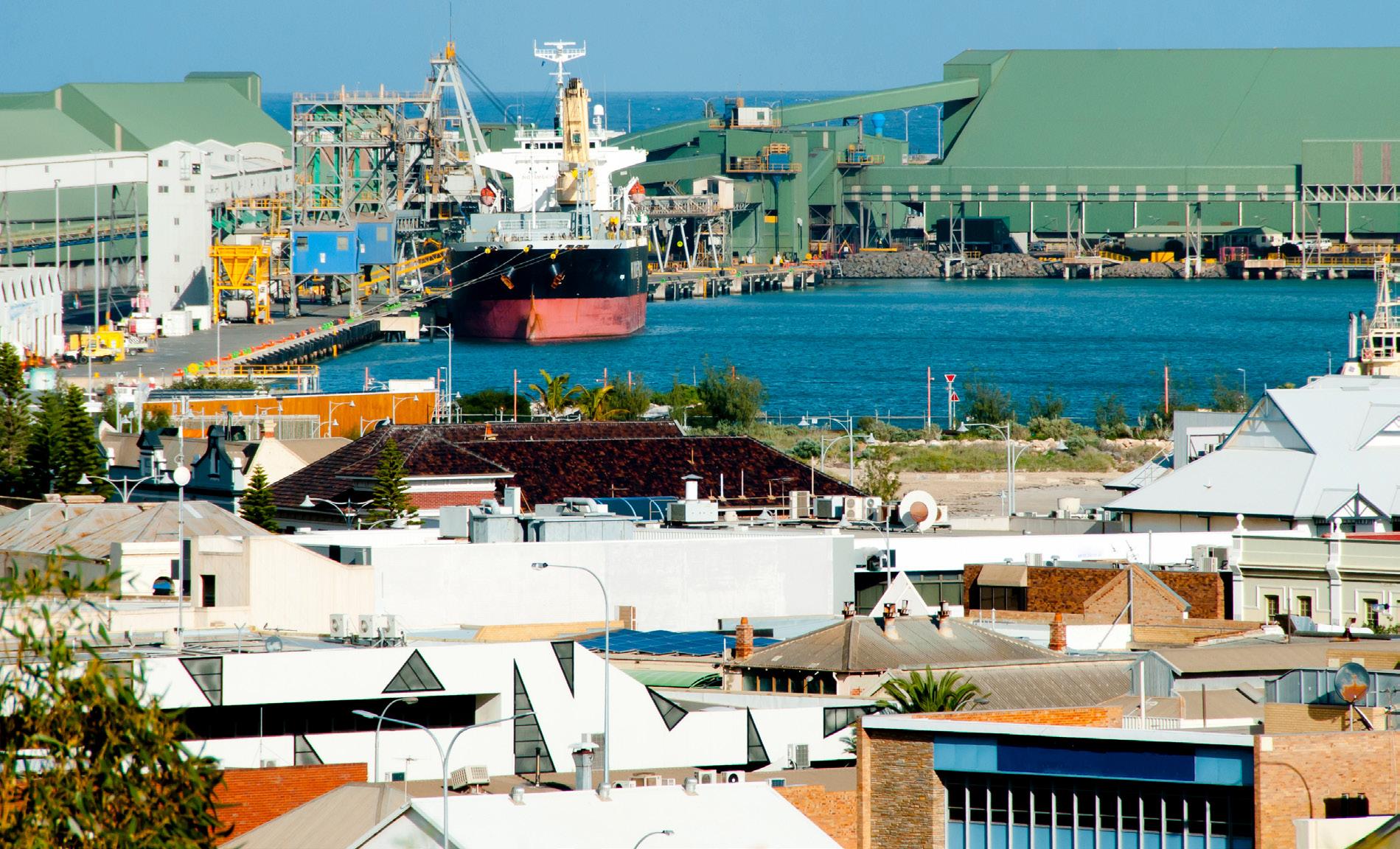
MG: We have a fairly rigorous strategic plan in terms of the direction that we want to go. Primarily, we look at two key things. Firstly, it’s our advocacy on behalf of the ports sector nationally. As its collective voice, we need to ensure that we are building those ties with our external stakeholders.
Members of Parliament are very much a part of that external stakeholder relationship and we are now in the process of finalising the development of an organisation which has been designed to ensure that we maintain and build those relationships with our elected representatives. This applies on a local level for our members, but also at a national level so that we can discuss policy issues, whether it be environmental or commercial.
The important thing is to build those relationships early, and not in the middle of a crisis. That way, when a crisis strikes, as we saw with the COVID-19 pandemic, you have already developed that level of trust and understanding of
how the system works. That’s critical for us going forwards.
In terms of our external priorities, we are also looking to do more work with opportunities in the wider community to ensure that people are aware of what we are doing. As an example, this year I will be presenting in the Solomon Islands and later New Zealand as part of our South Pacific Members Programme; ports are one of the two critical


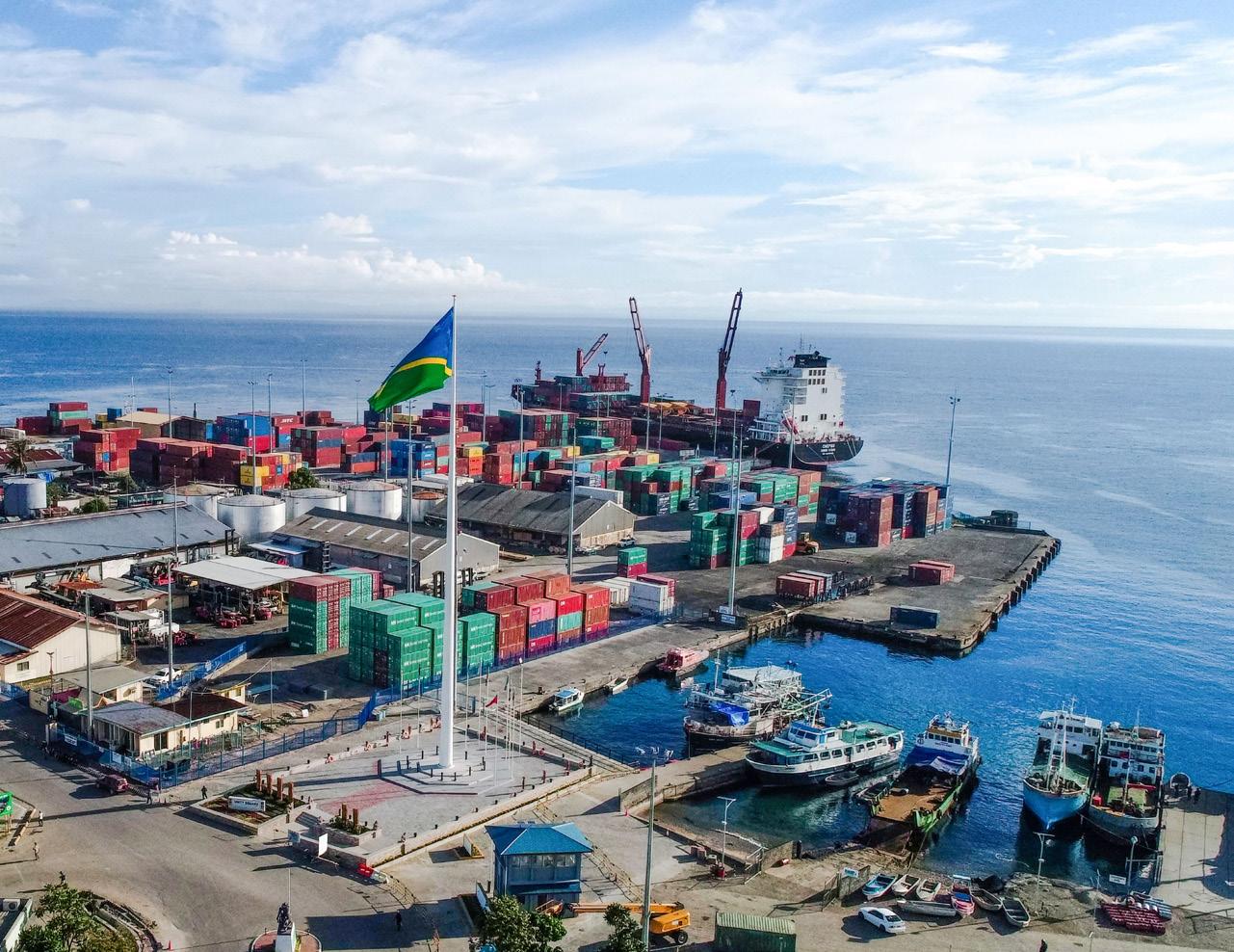







pieces of infrastructure, (ports and airports) that are crucial for our region’s prosperity, including Australia’s. We are encouraging Pacific nation ports to join us, share knowledge and build understanding across Oceania of the challenges that are confronting all of us with global issues such as climate change. Here, we will be addressing what we can do to assist them, and how we can help them with access to training and workplace safety. We approach this in a way that isn’t centred on a commercial perspective –we don’t do it to purely increase our membership. We are interested in their knowledge and building that level of interaction to develop a regional relationship.

Internally speaking, it’s all about making sure that we continue to deliver a quality service to our members by providing them with access to the latest information and investment in research that we possibly can. In September 2023, we will be holding a business and operations conference in Geelong, Victoria which is centred on innovation and investment through the lens of sustainability and how we can make our assets work together better, smarter and for longer, doing so in a way that brings the community’s best interests with us. A major focus of this is the investments that are being made in new energy with offshore wind turbines and what that will mean for the ports sector going forward, since we will be critical in a logistical sense. Offshore wind is the next
chapter for us and how we are going to make that happen. We will also be looking at the issue of cybersecurity and the threat that poses to critical infrastructure such as ours. In doing so, we will be following a similar approach to how we have handled the topic of sustainability, ensuring that people understand the methodology and what practices are in place to protect all of us and protect the supply chain.
We are continuously on the go because there are so many issues that we as an organisation have to manage. Challenges will always come towards us, but the good thing is that we have undergone the aforementioned 12-month examination by an independent government body and that has confirmed that all parts of our organisational structure are performing in a healthy way. I think it’s a good sign for us going forward that we have the support of the country to get on and get the job done.
Tel: +61 02 9247 7581
info@portsaustralia.com.au
www.portsaustralia.com.au
Gladstone Ports Corporation focused on facilitating, growing and diversifying trade in a economically, environmentally and socially sustainable manner.


gpcl.com.au

Fiji Ships & Heavy Industries Limited (FSHIL), a subsidiary of FPCL, operates as a fully commercial, self-funded entity, providing slip way facilities for dry docking vessels and berthing docks at the slipway sites. FSHIL is also recognised for its other core functions of heavy industrial and engineering works.
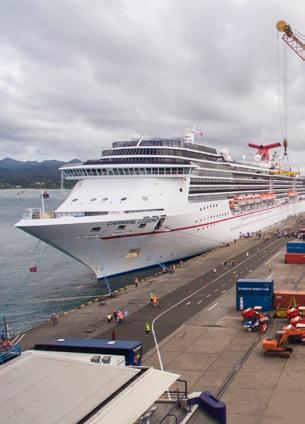
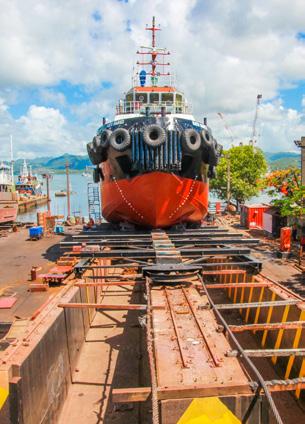
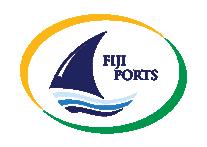
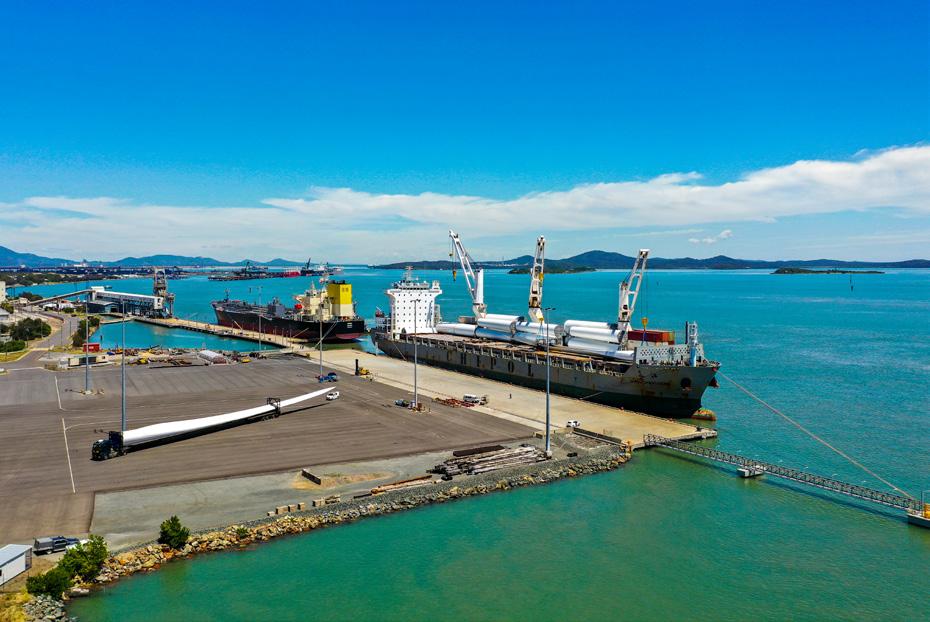
 The Premier provider of Sea Port Services & Facilities in Fiji
The Premier provider of Sea Port Services & Facilities in Fiji
